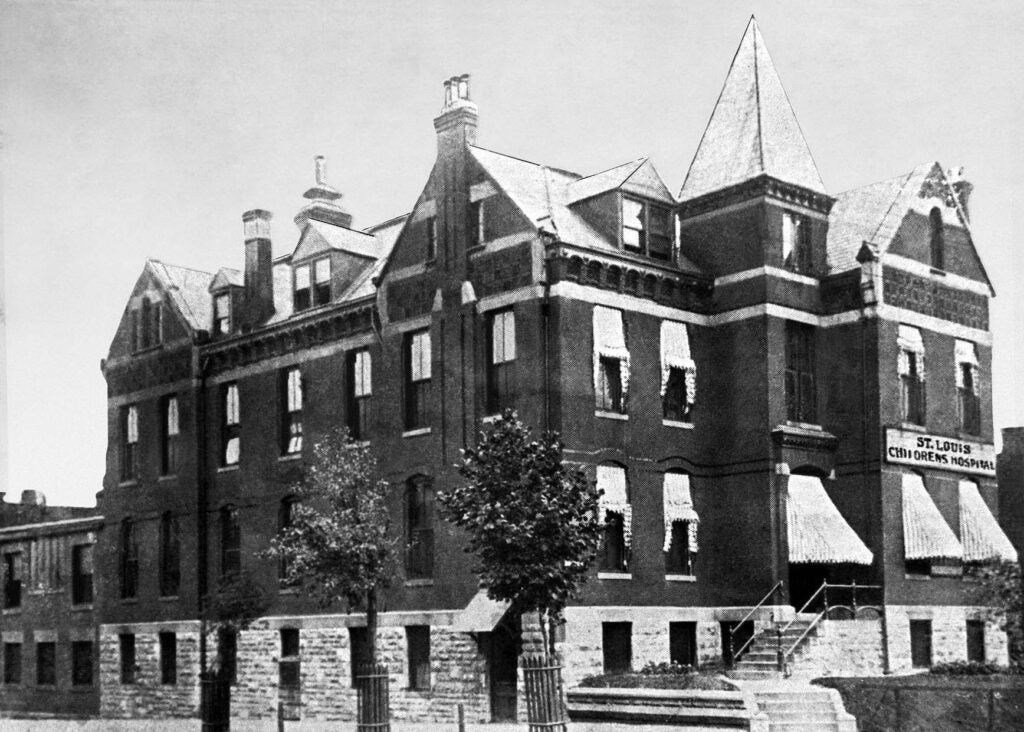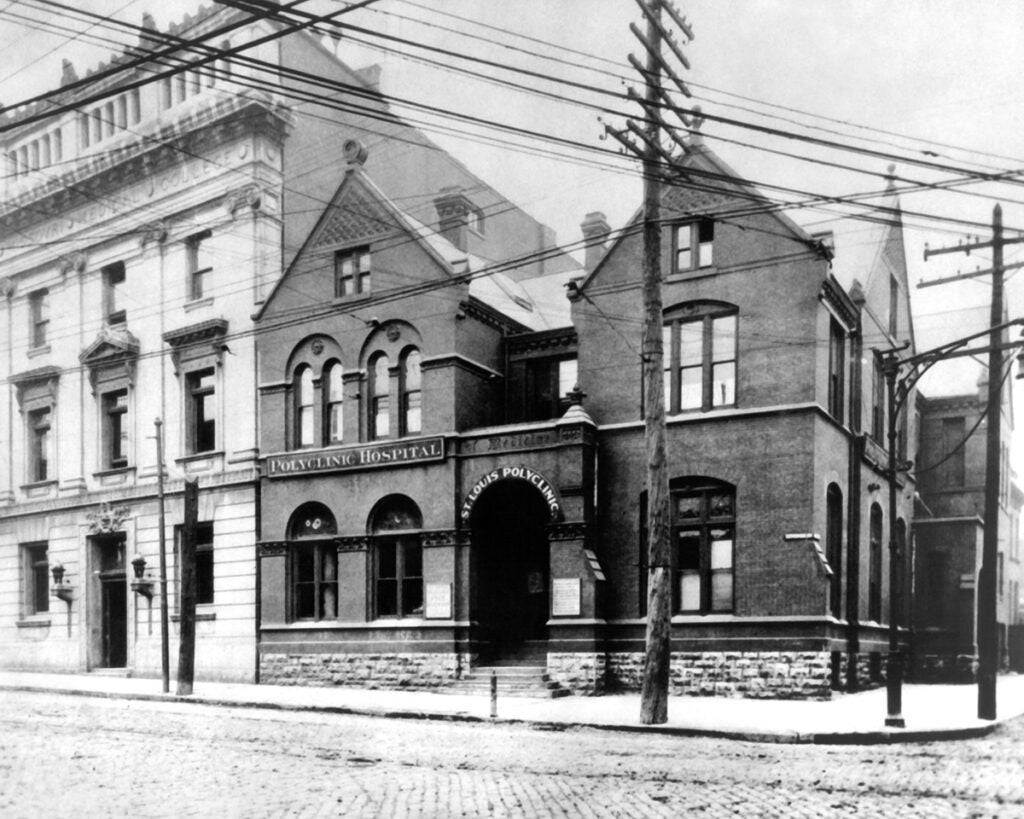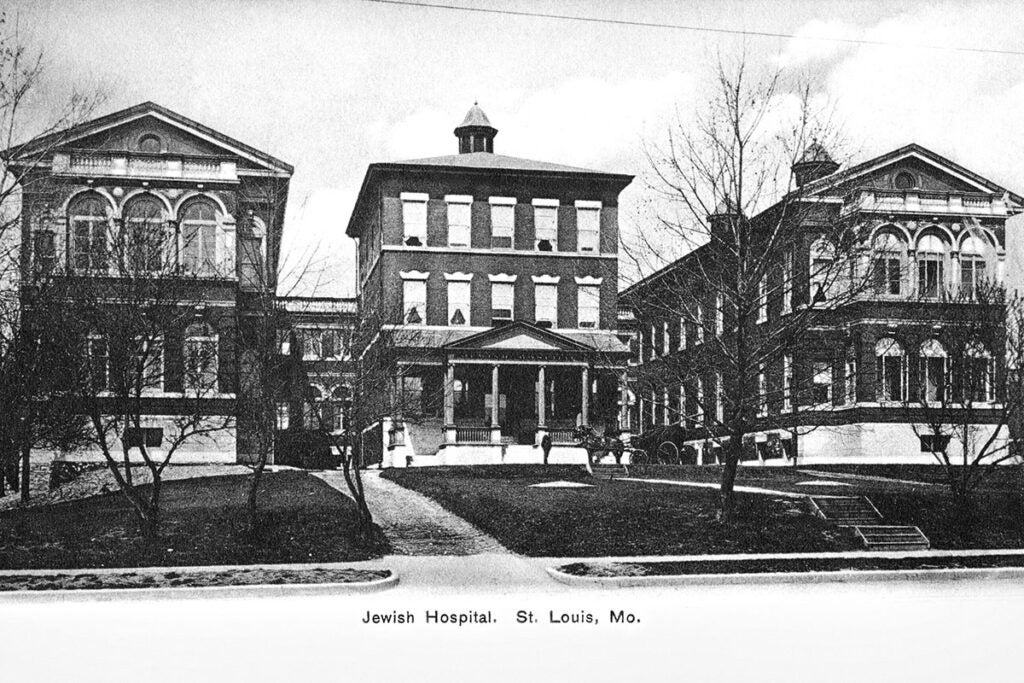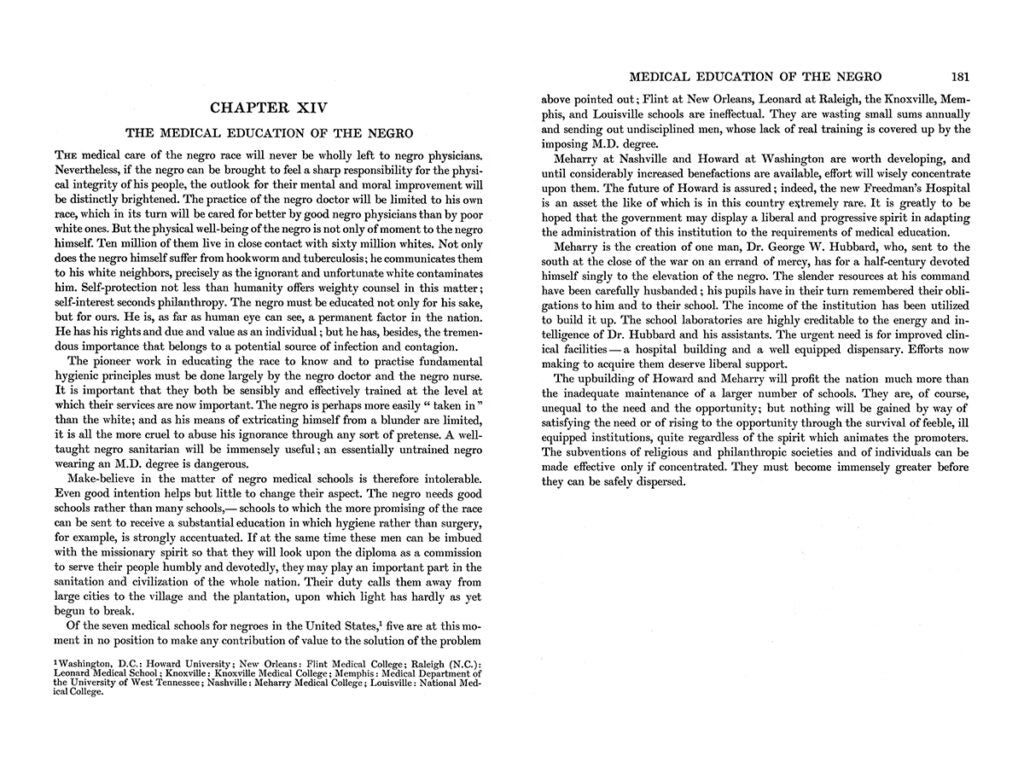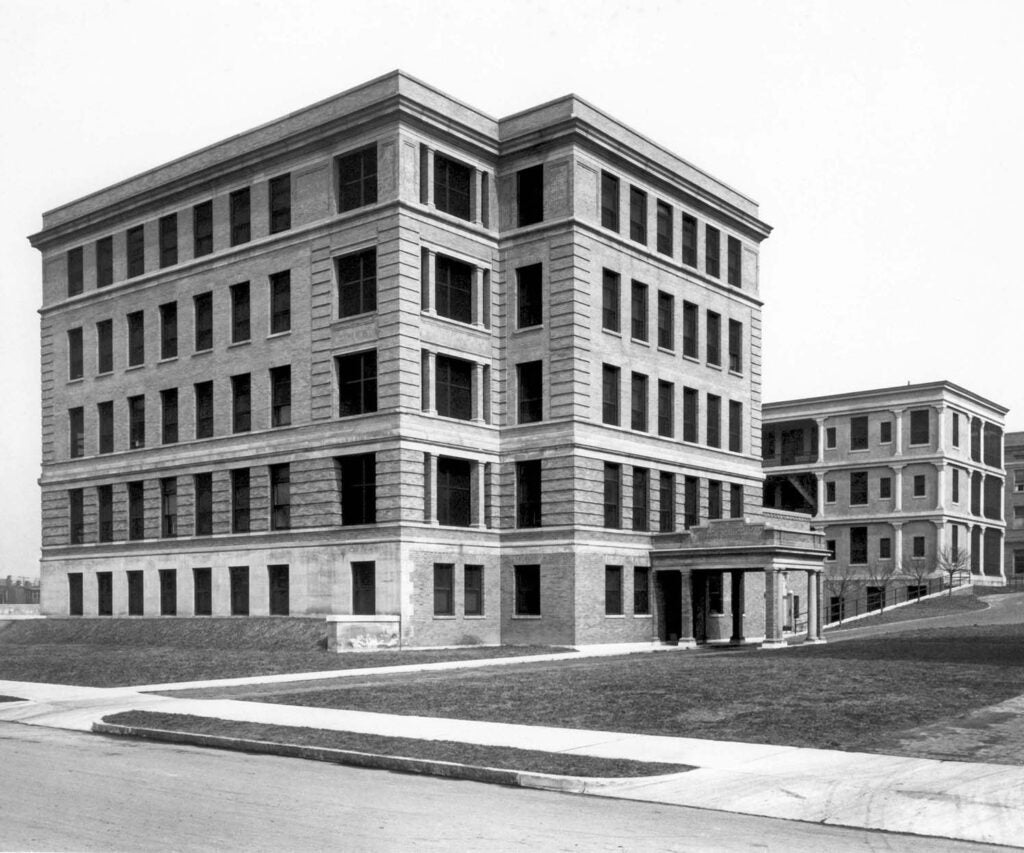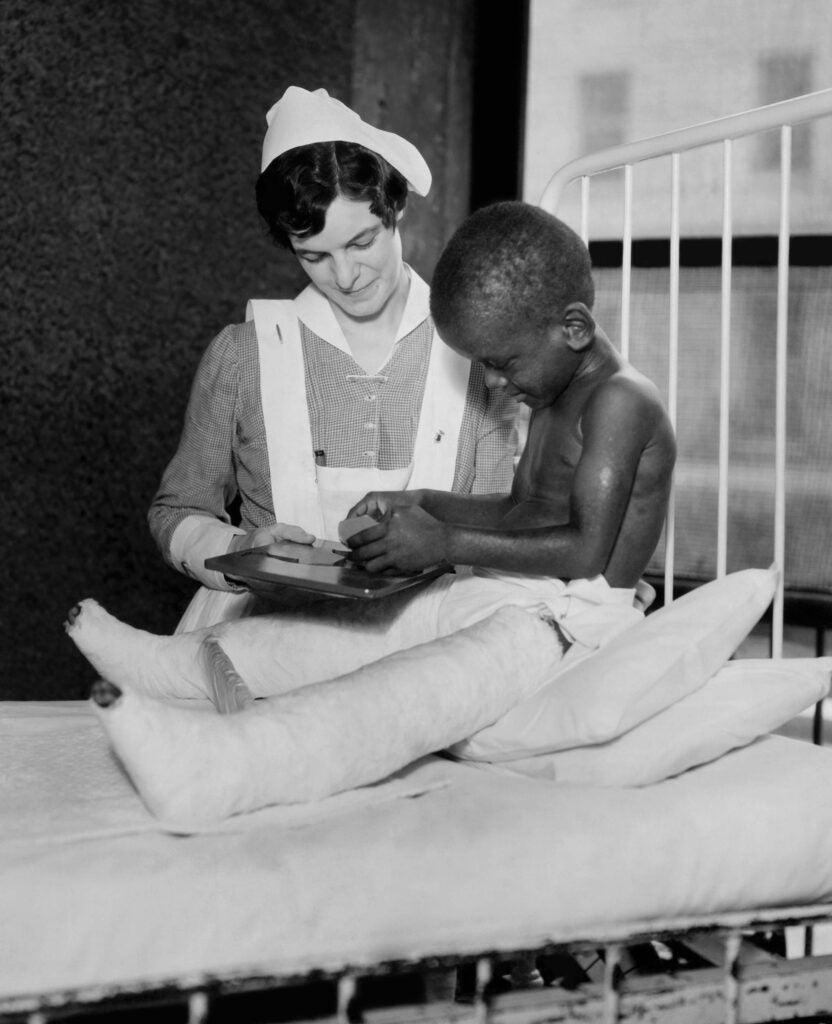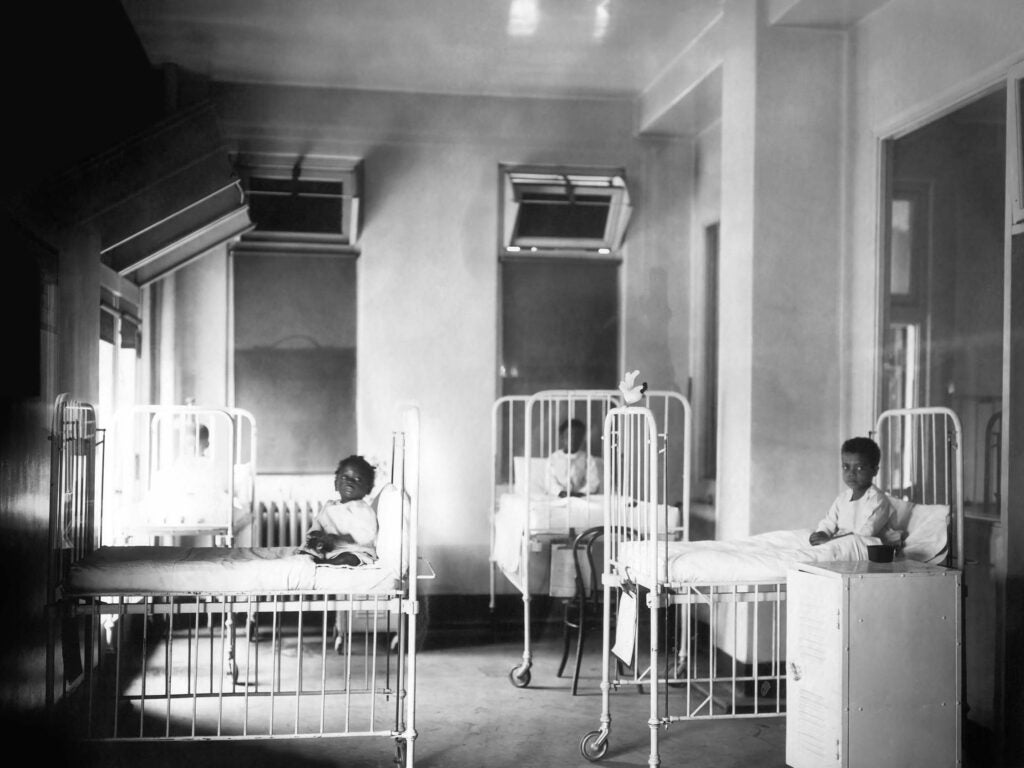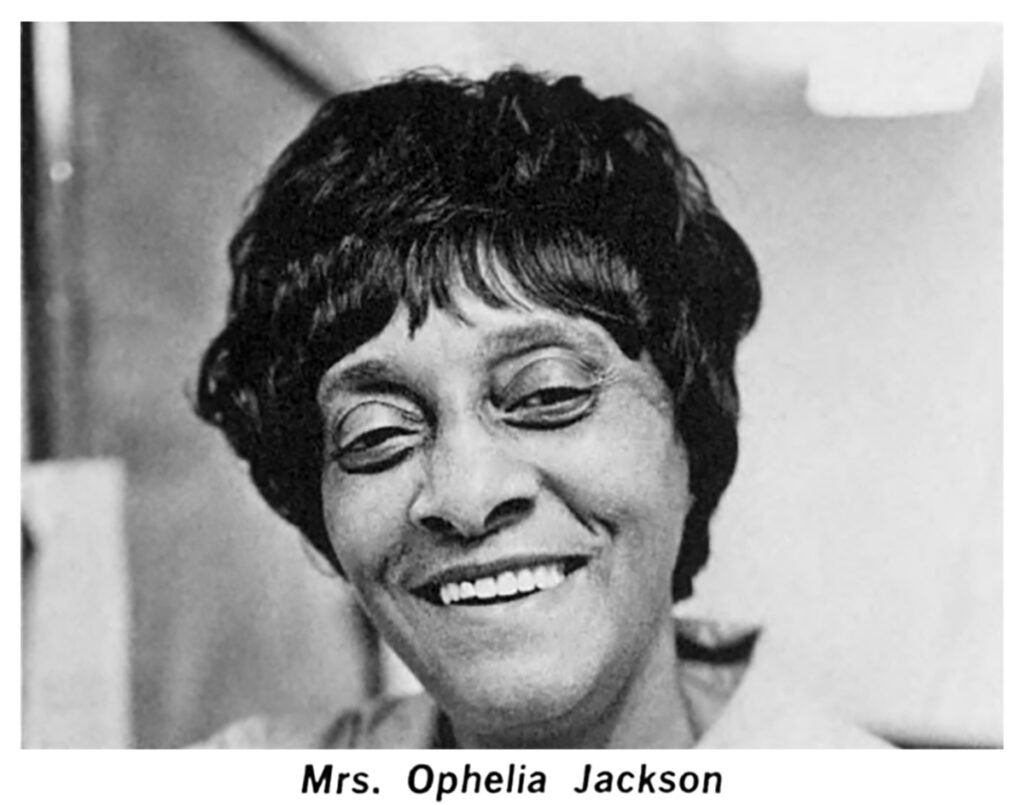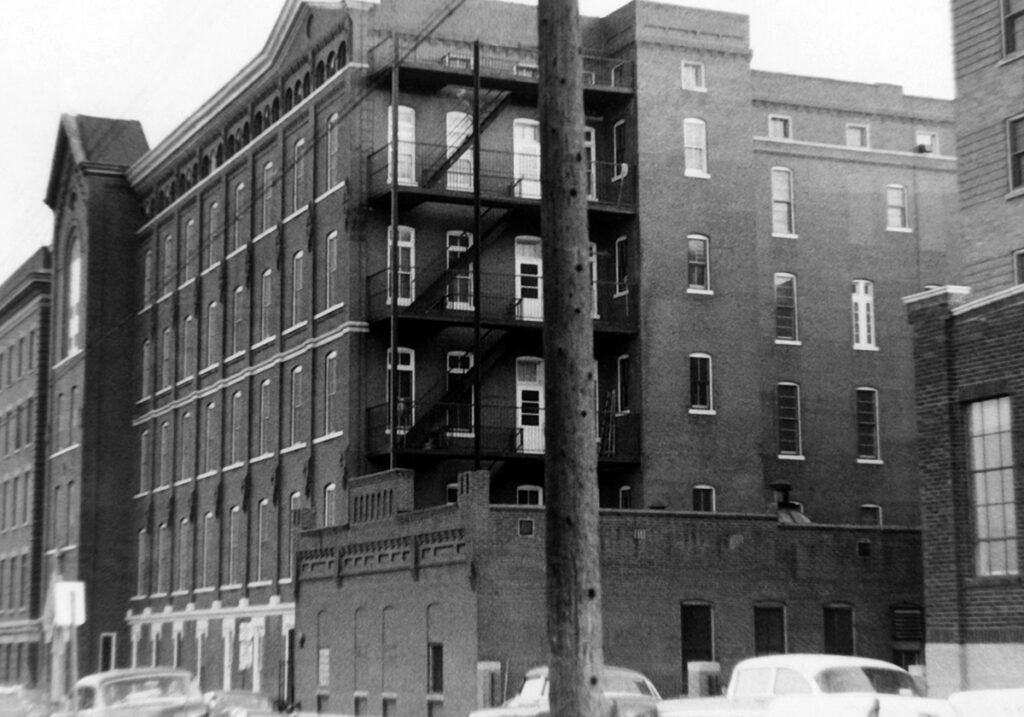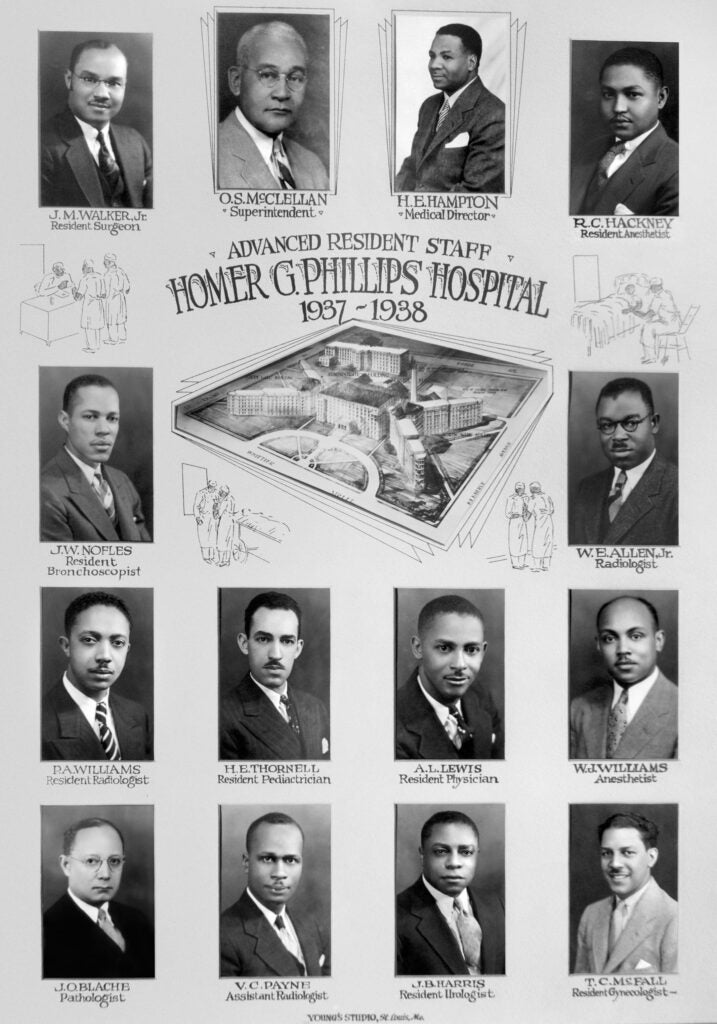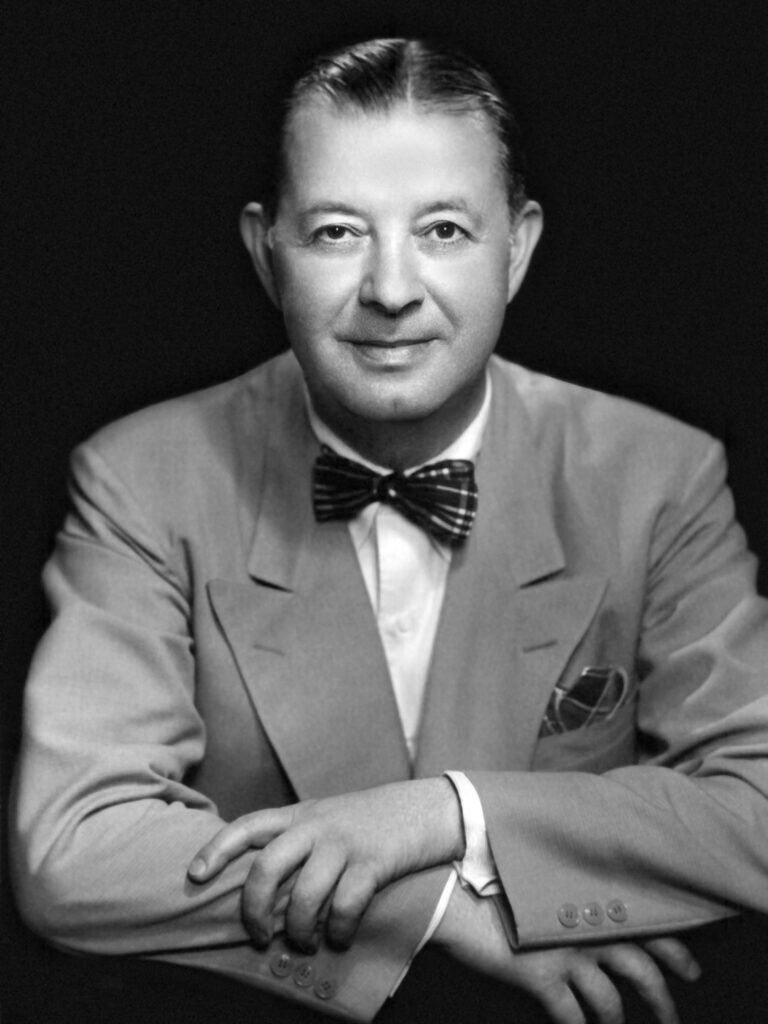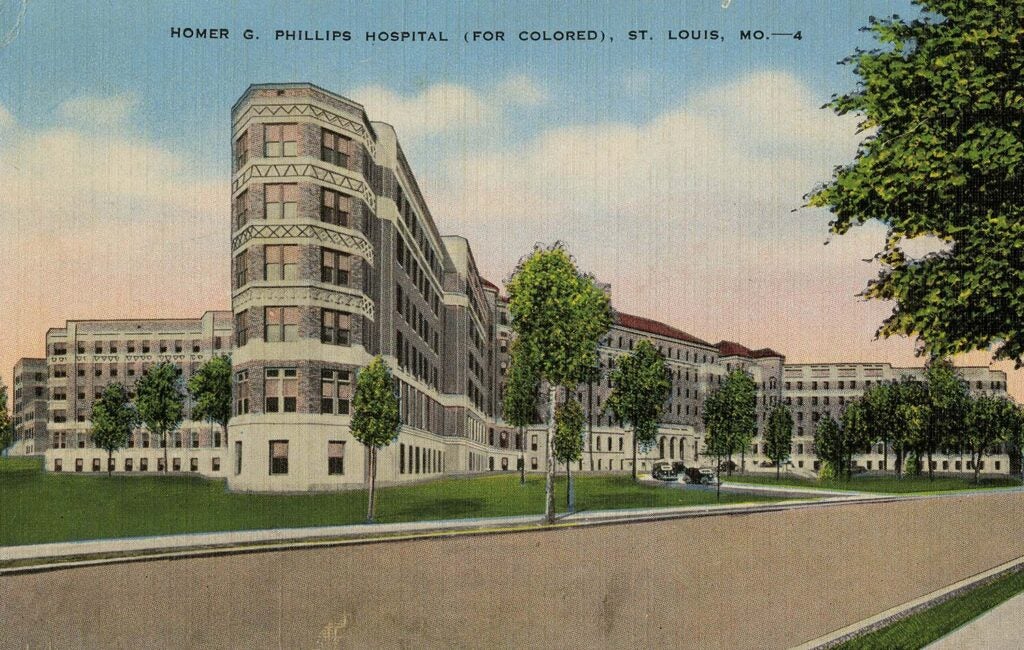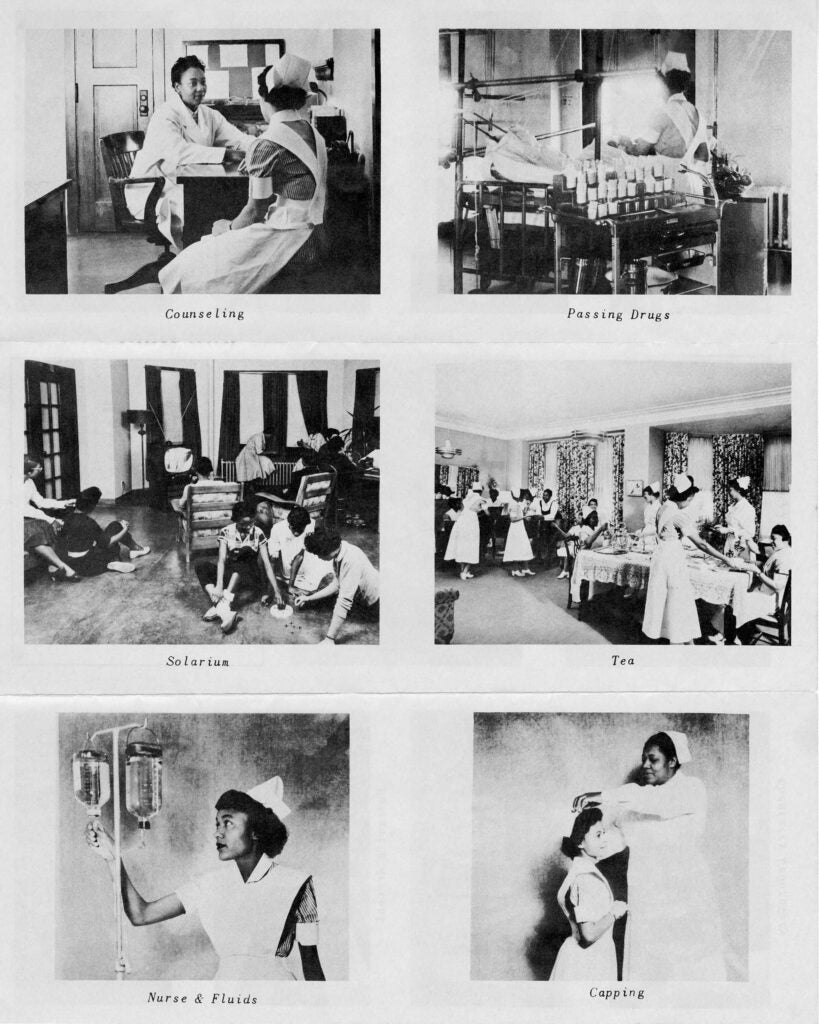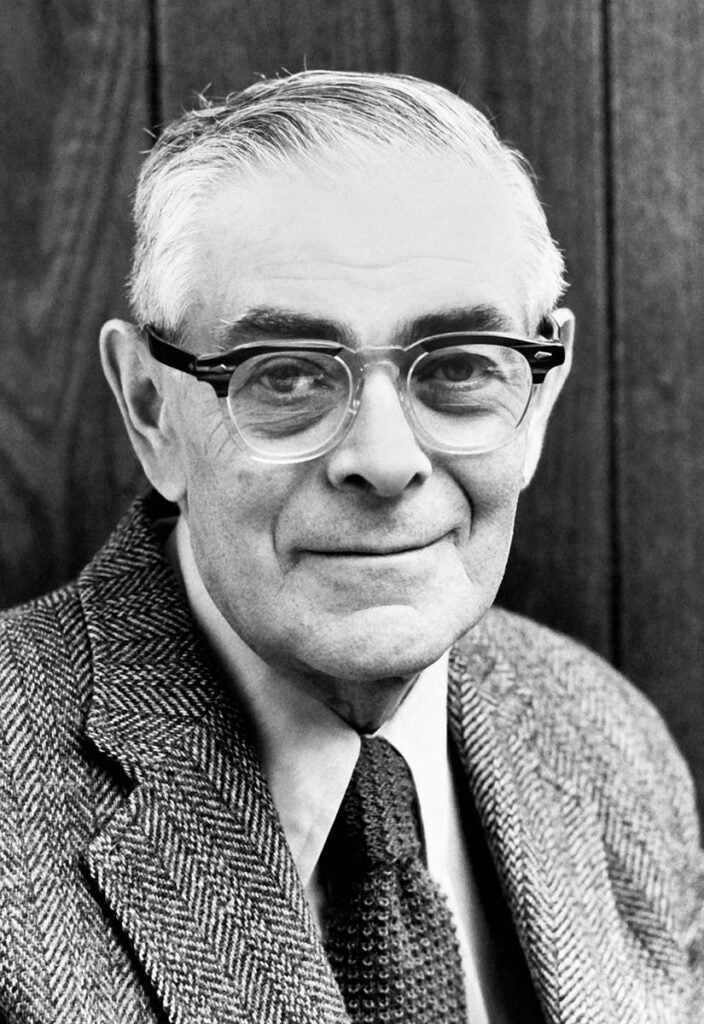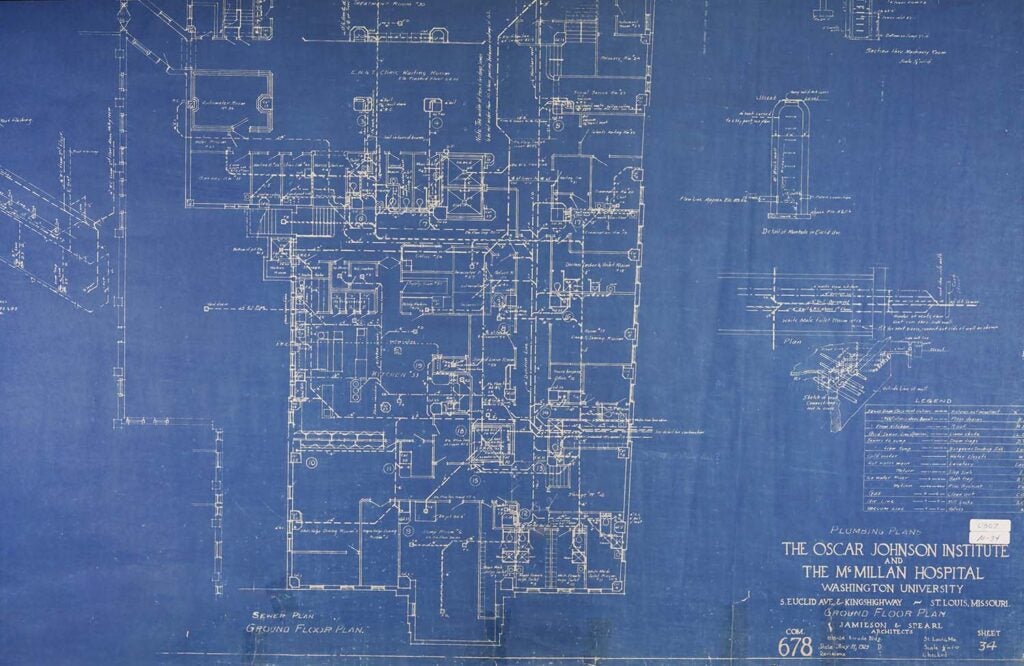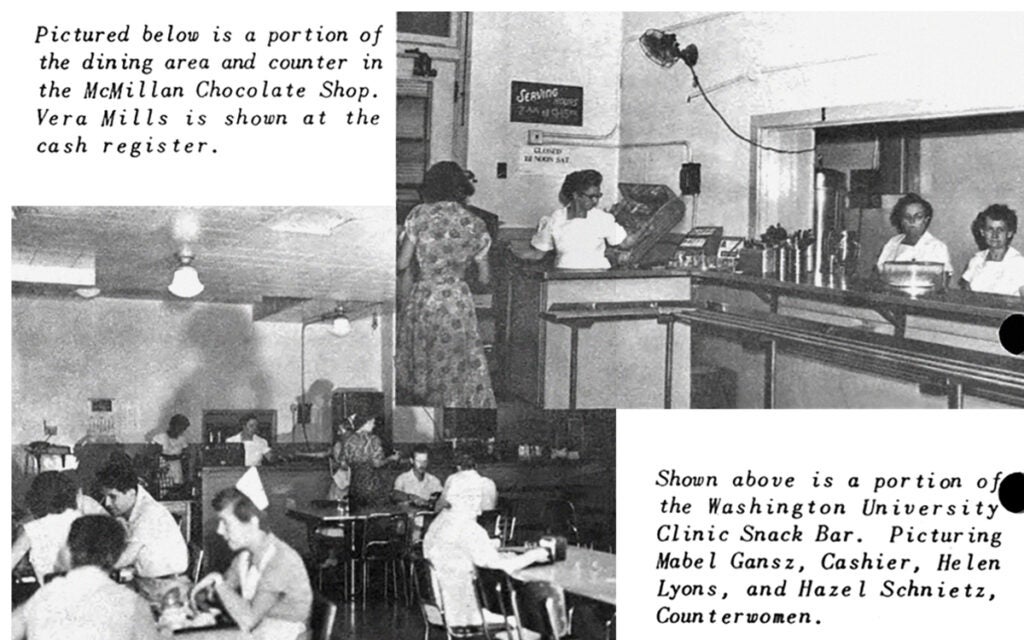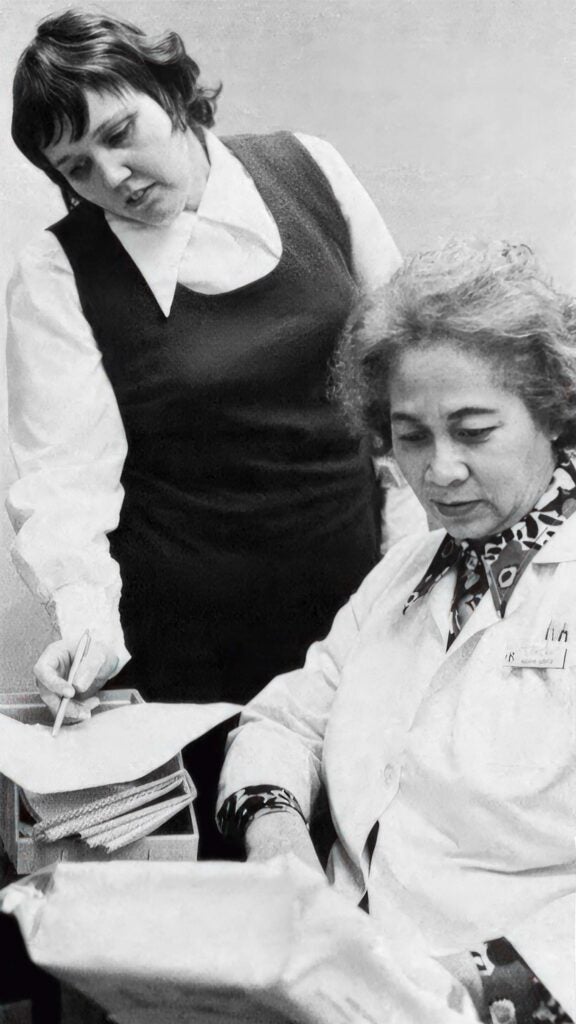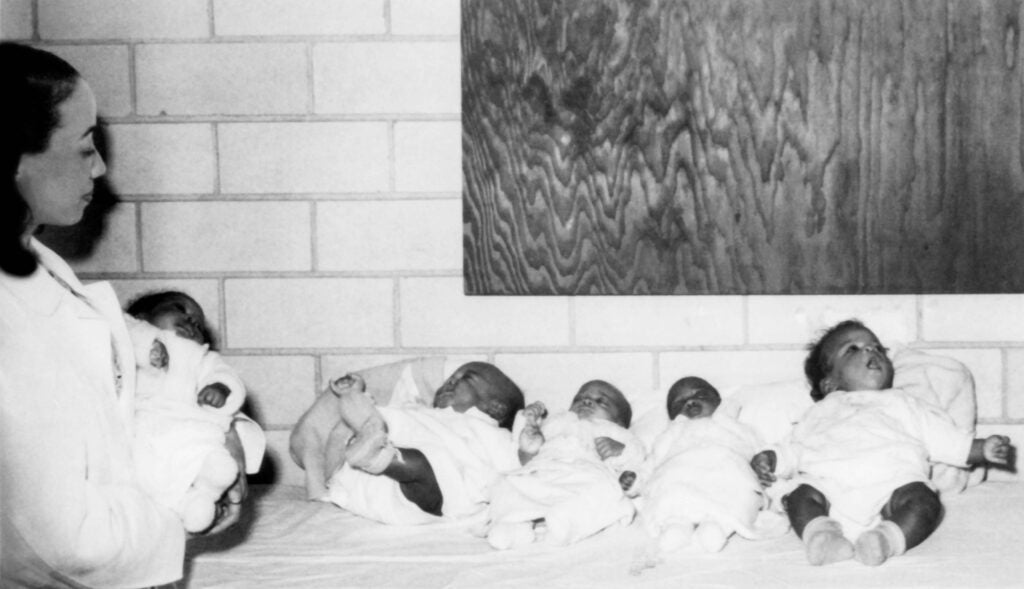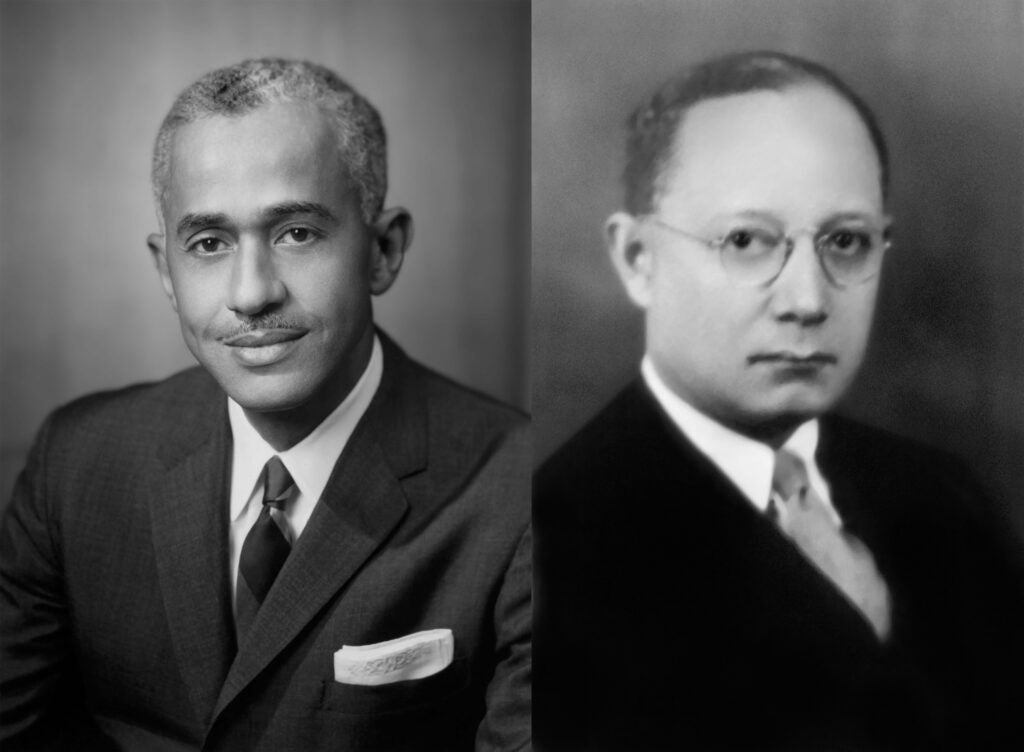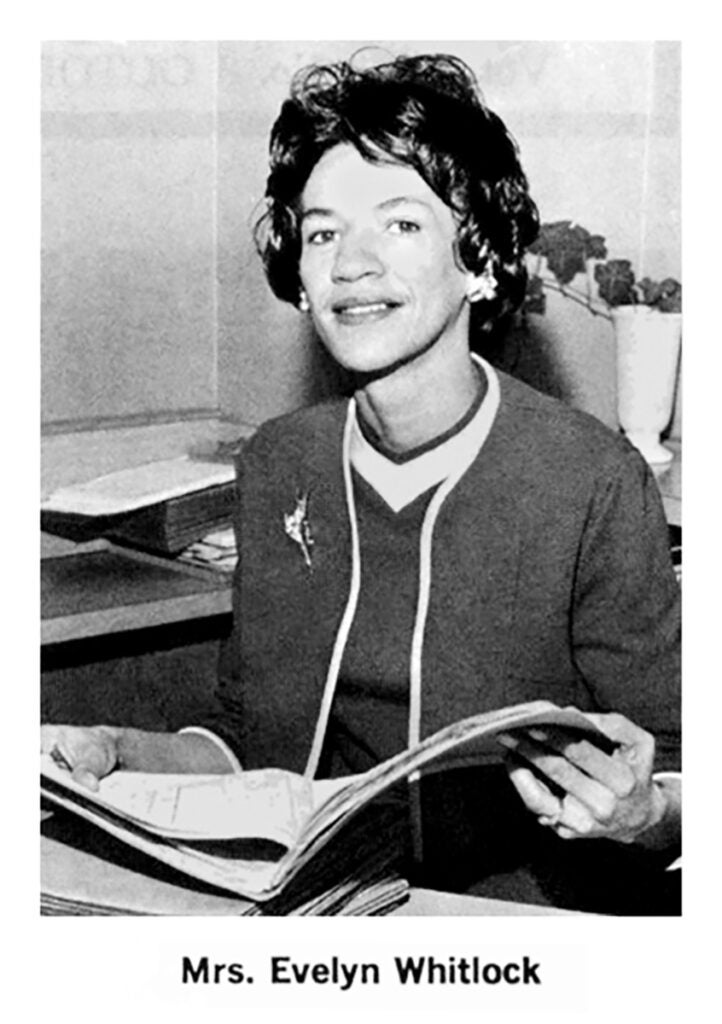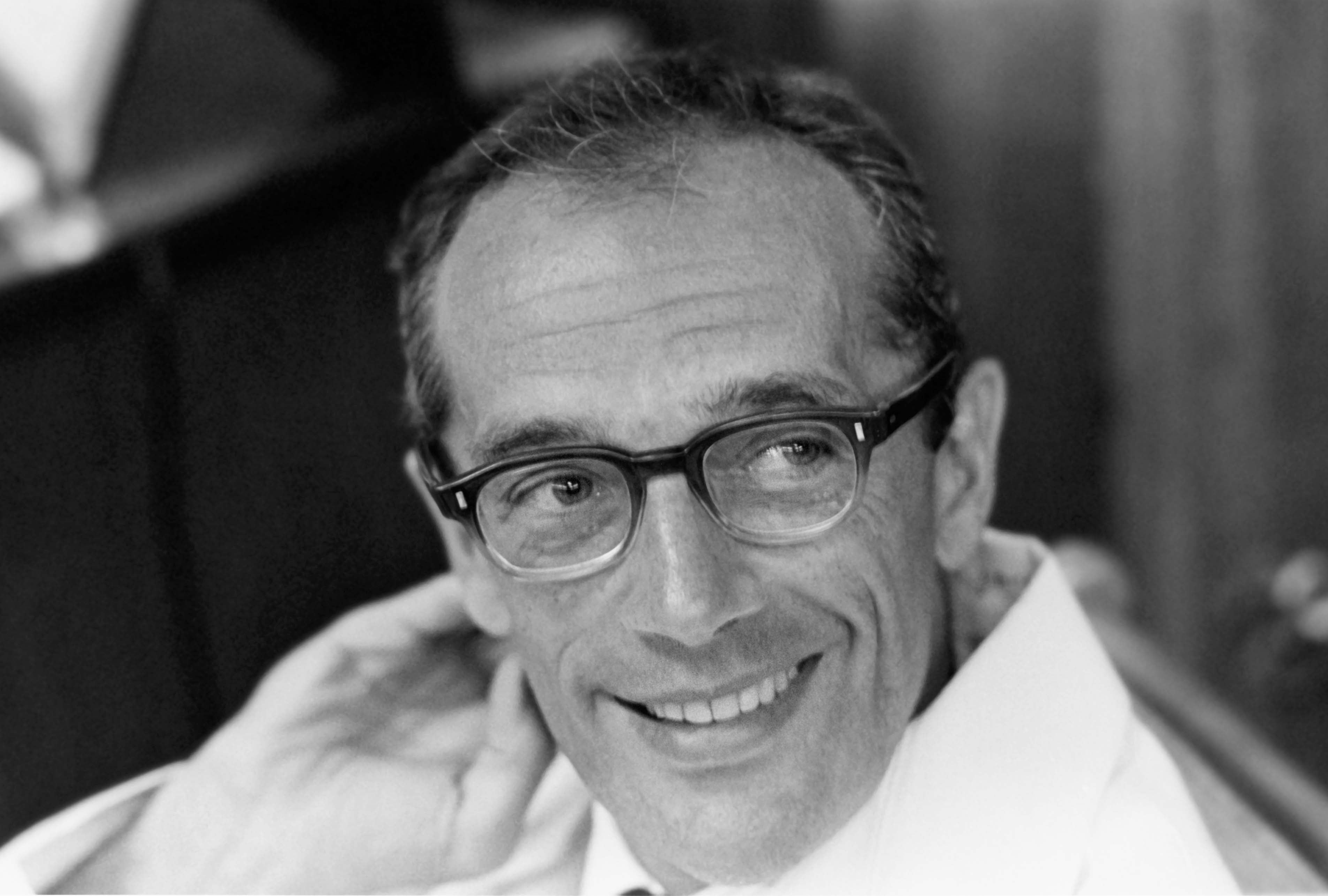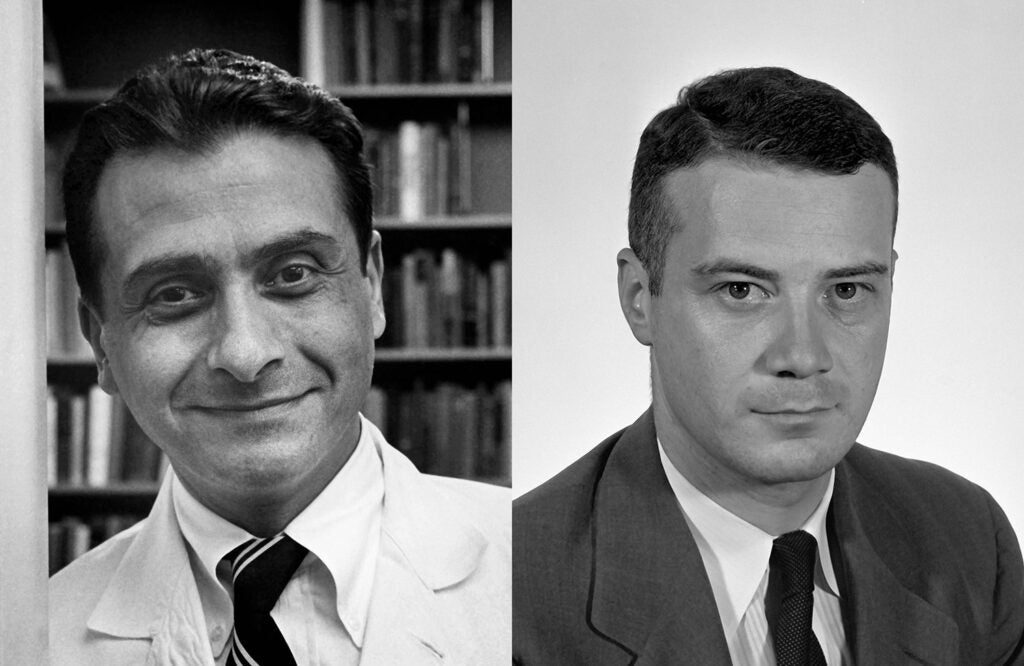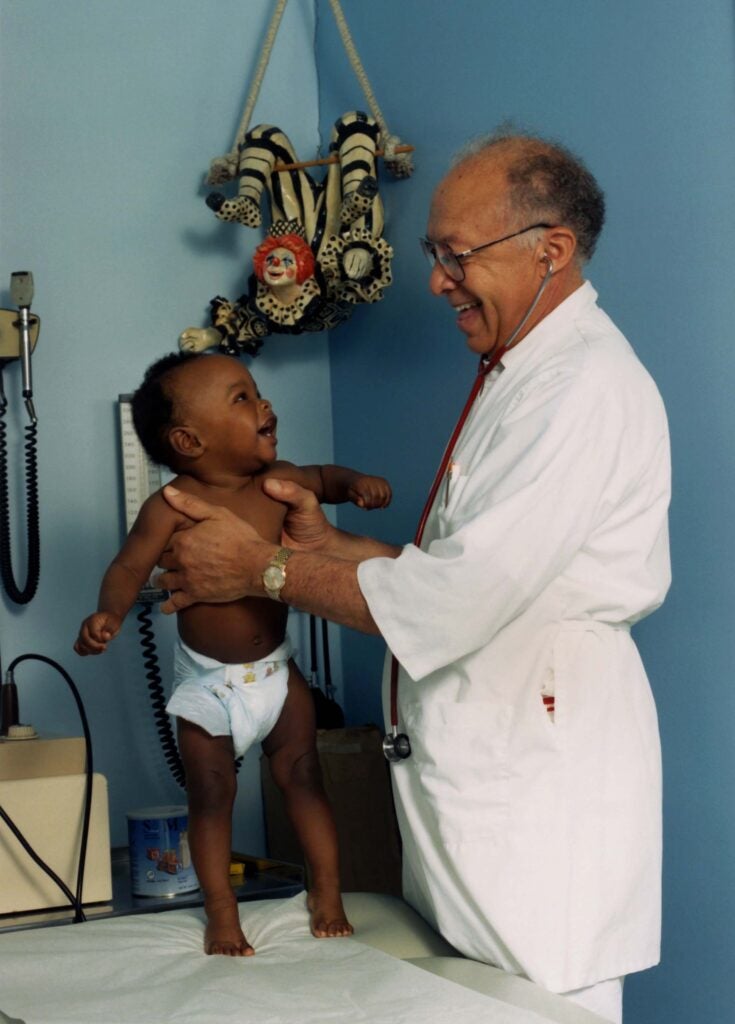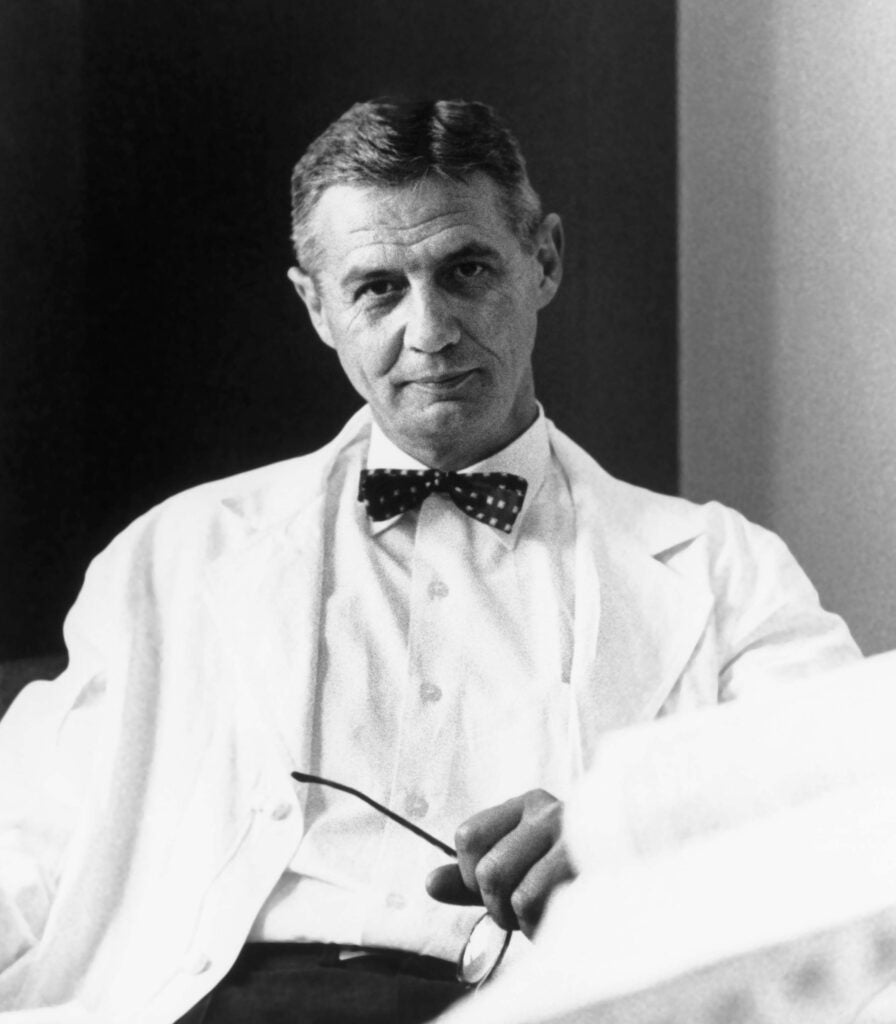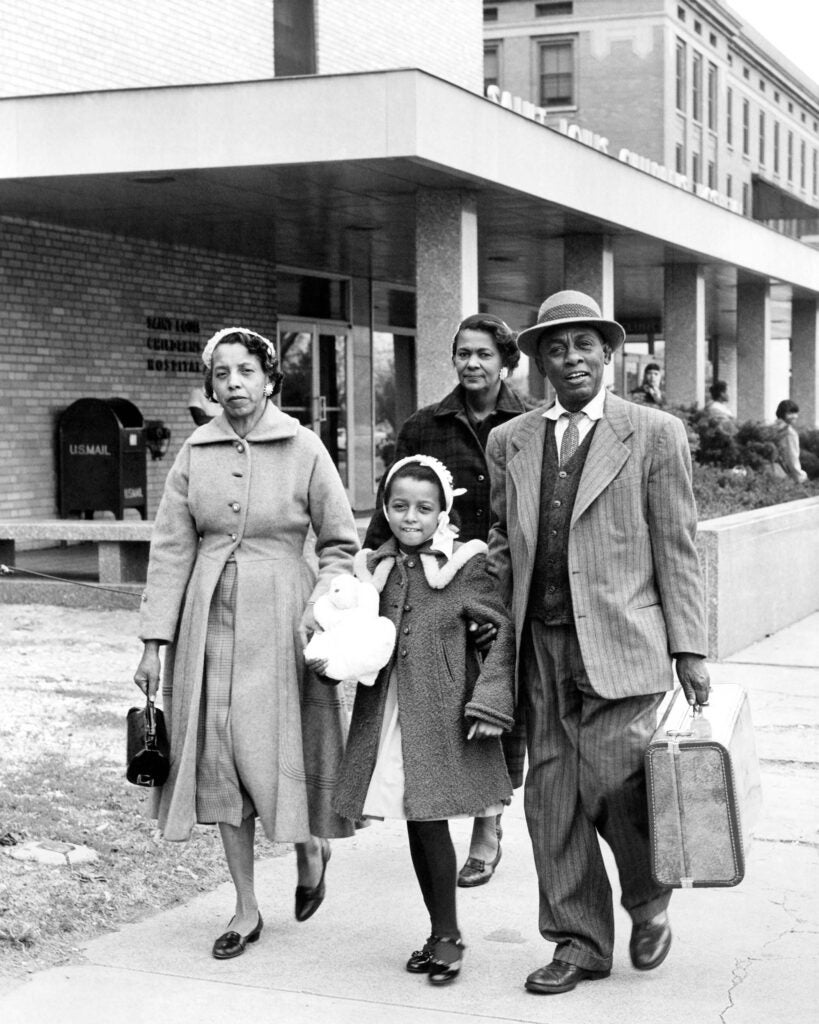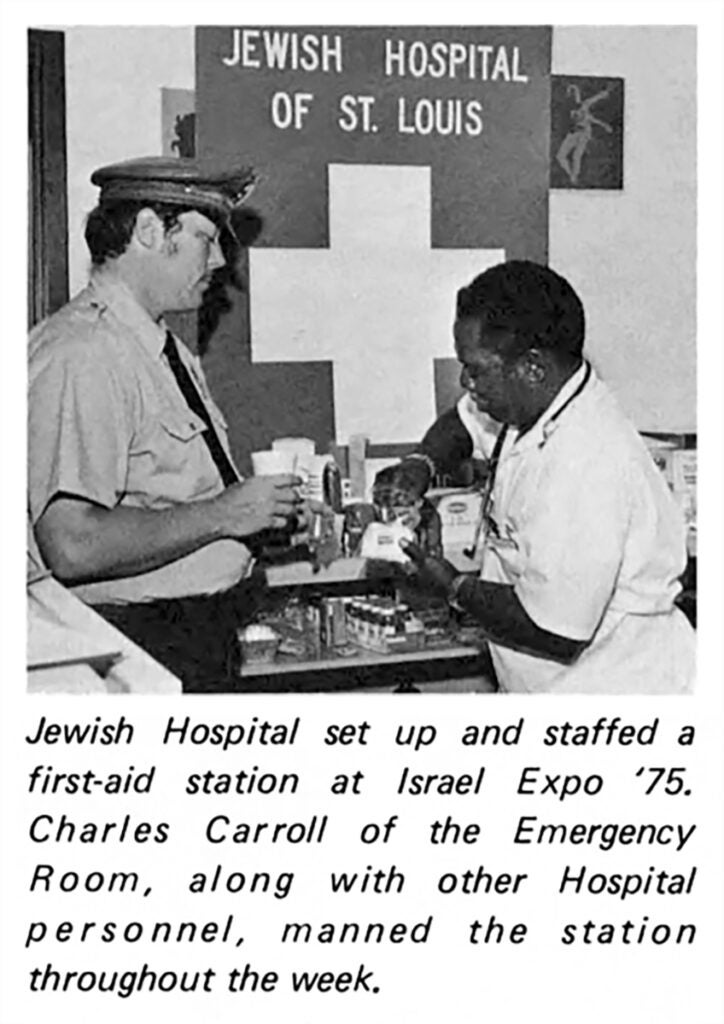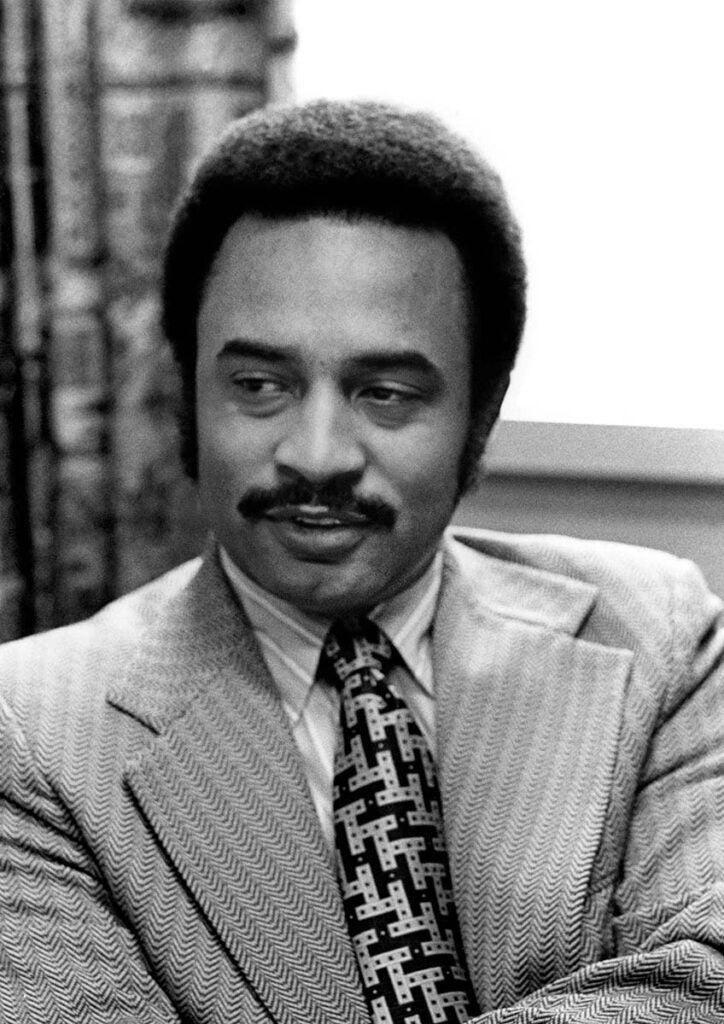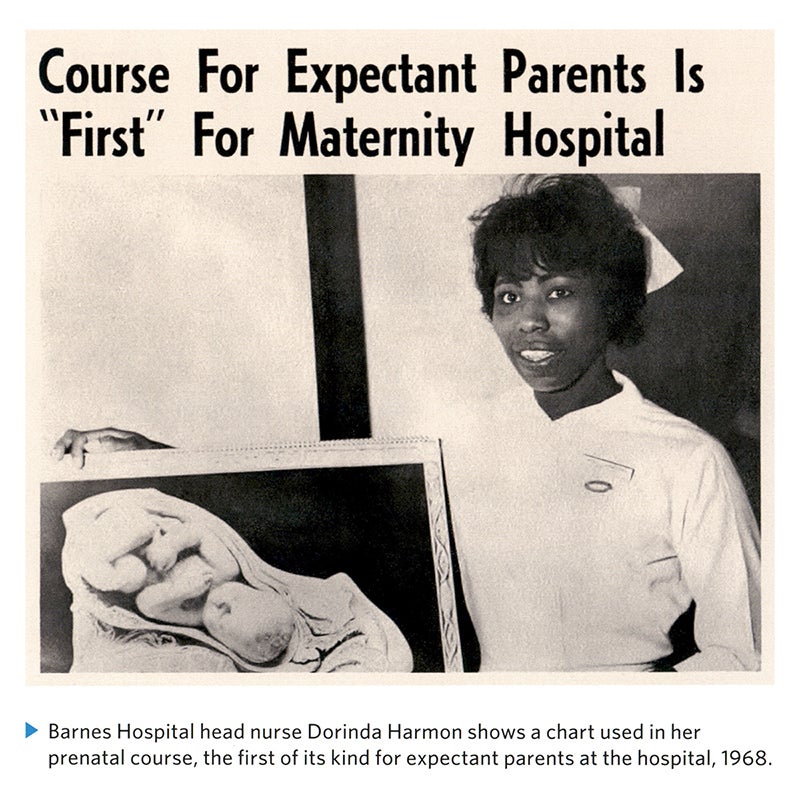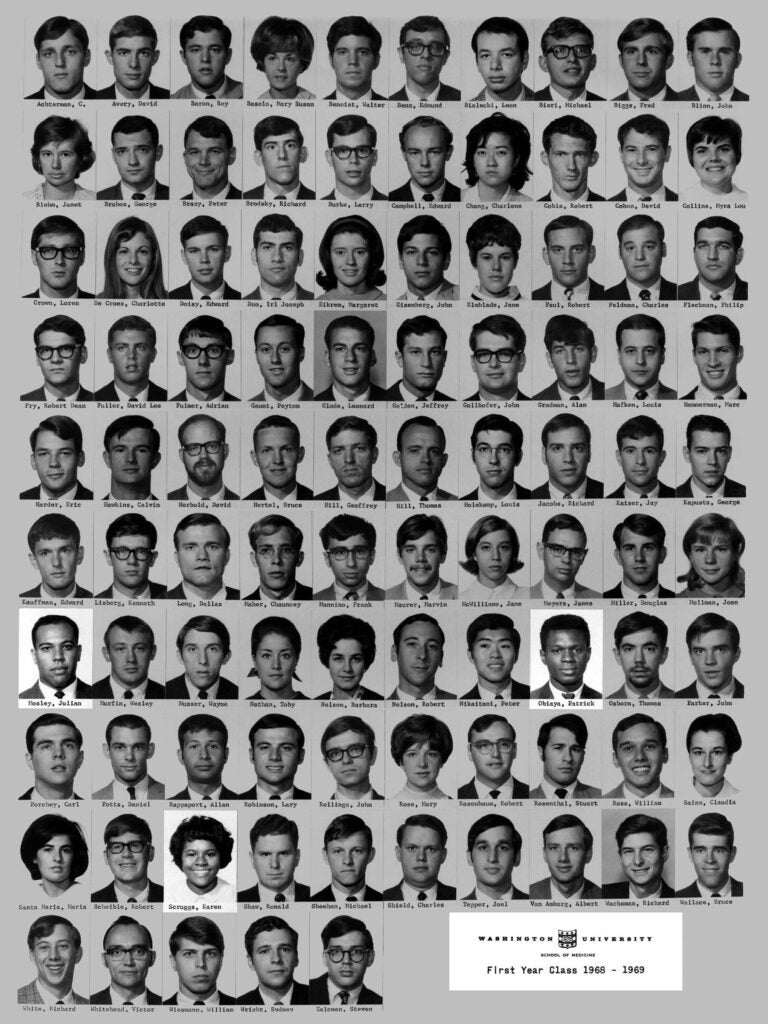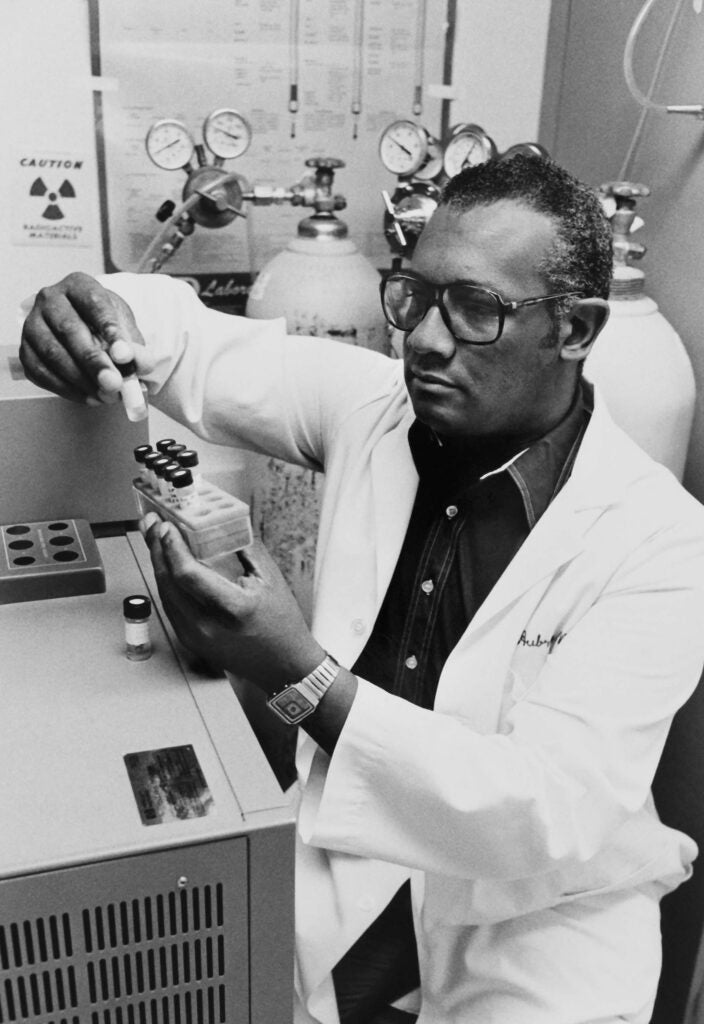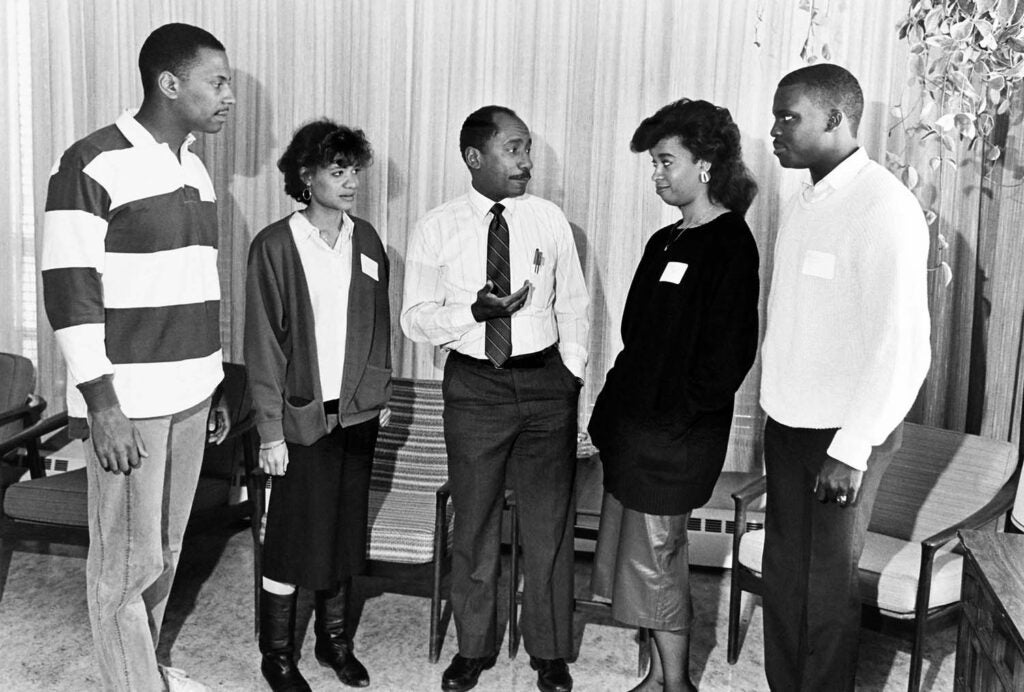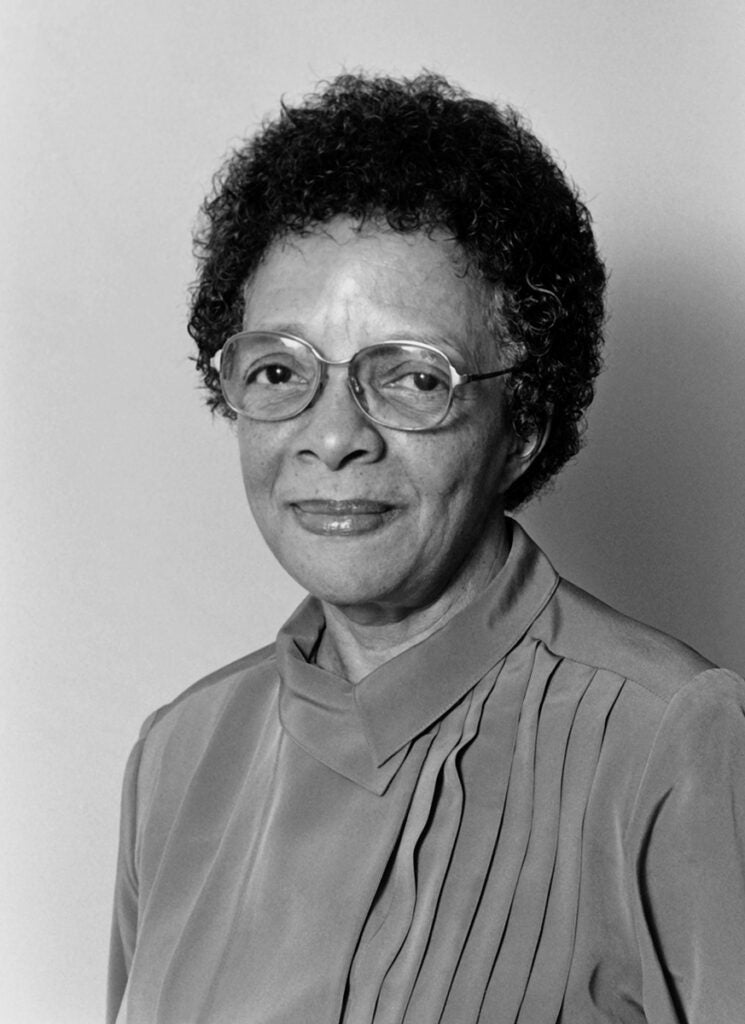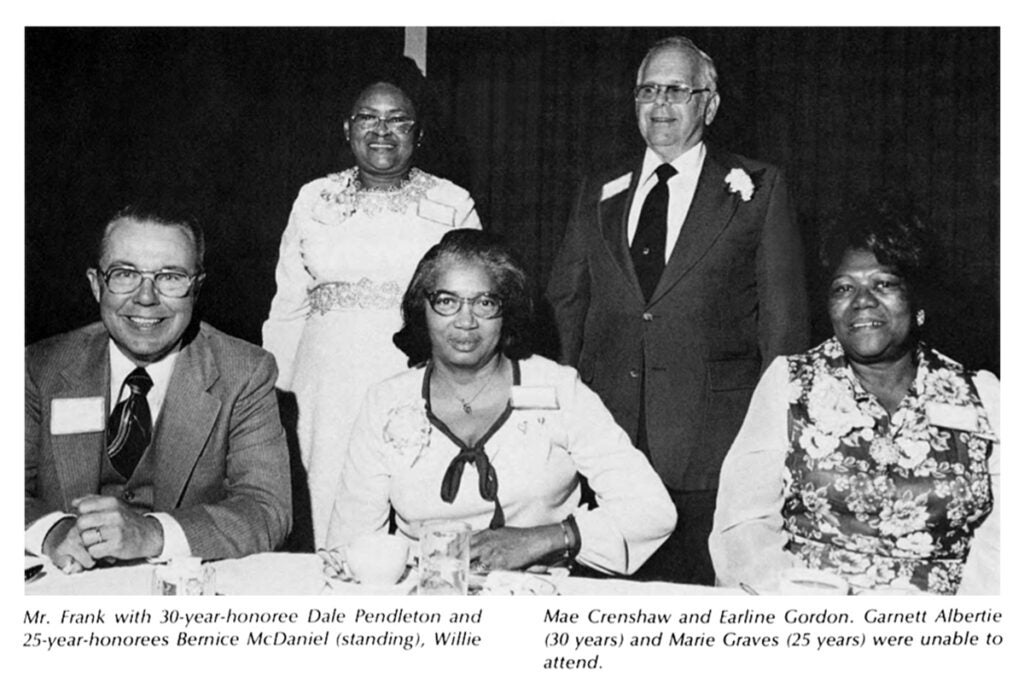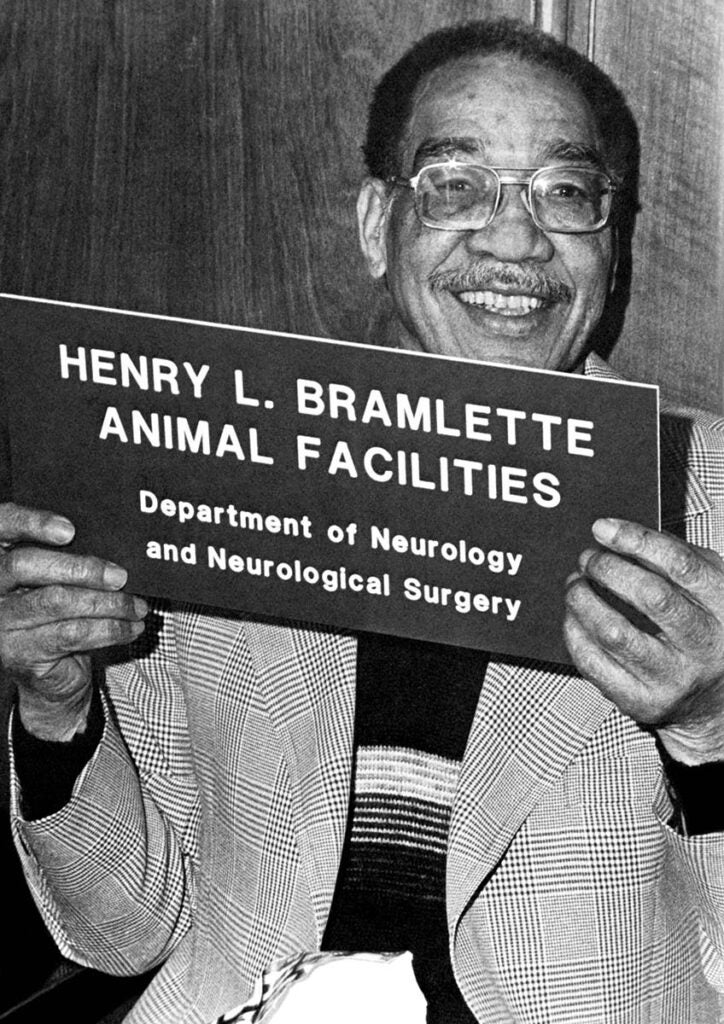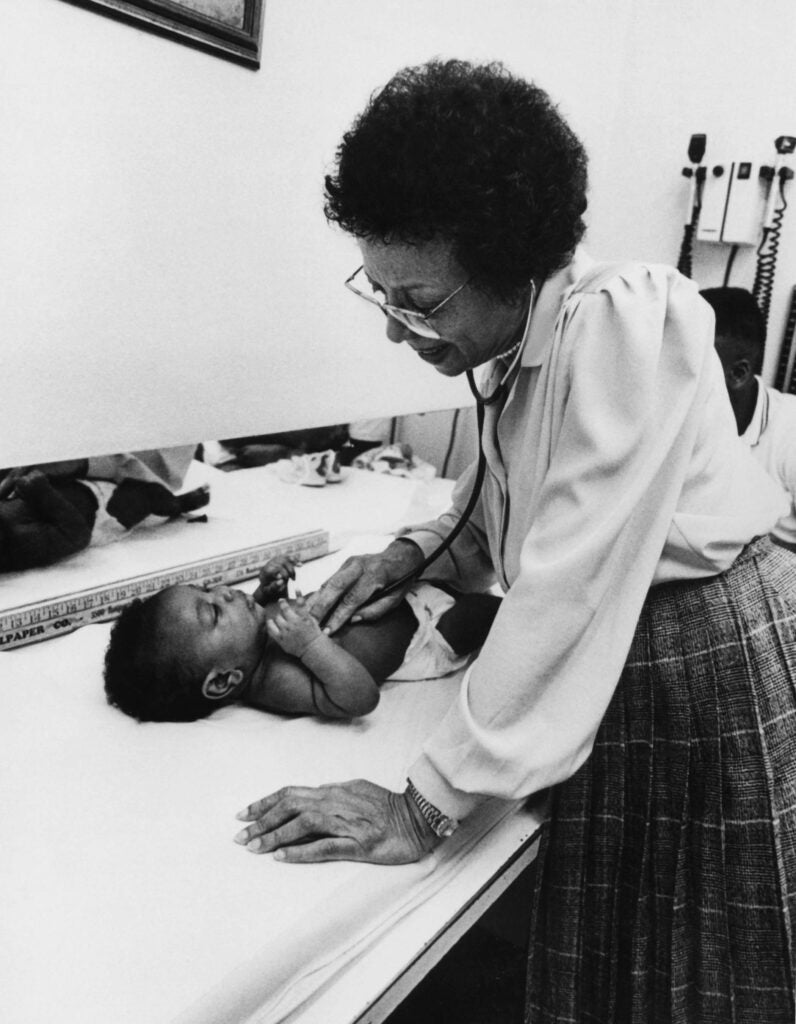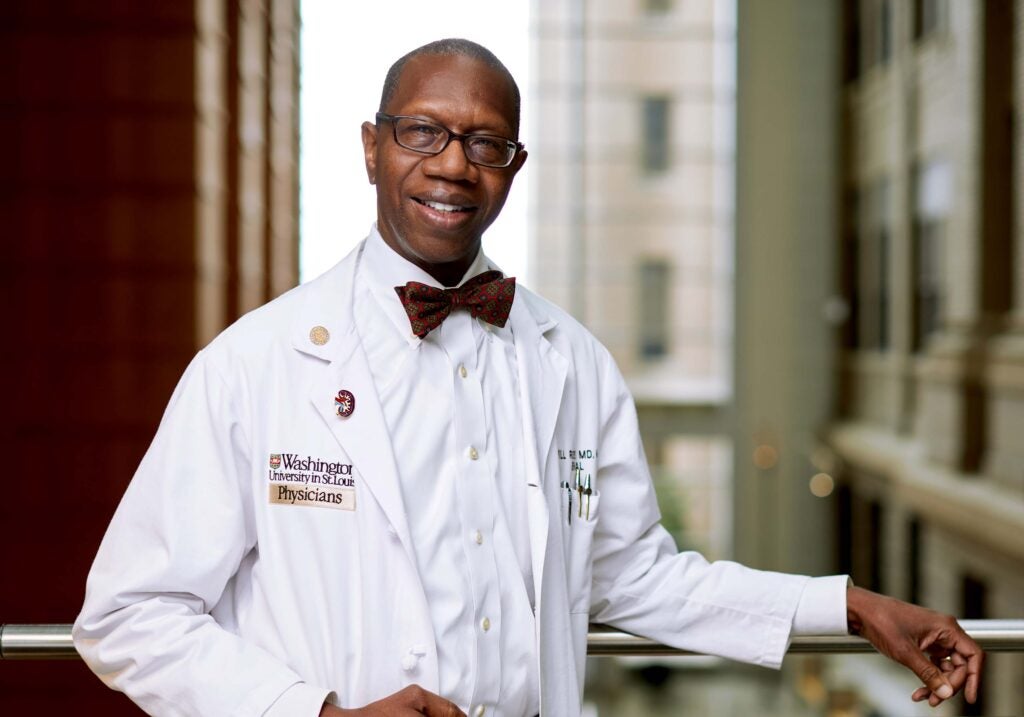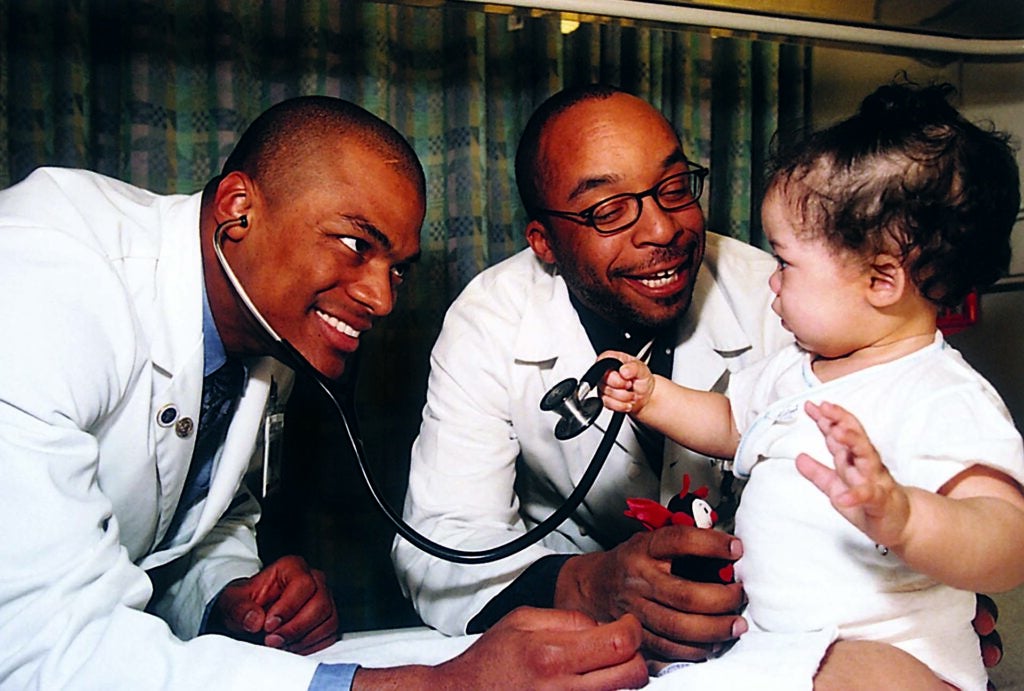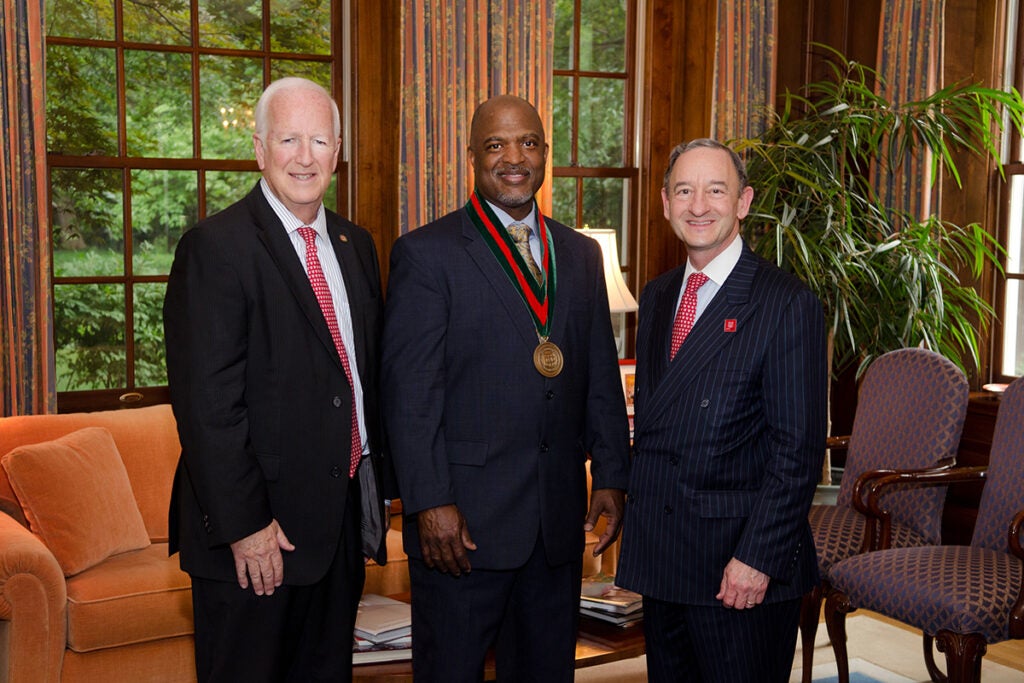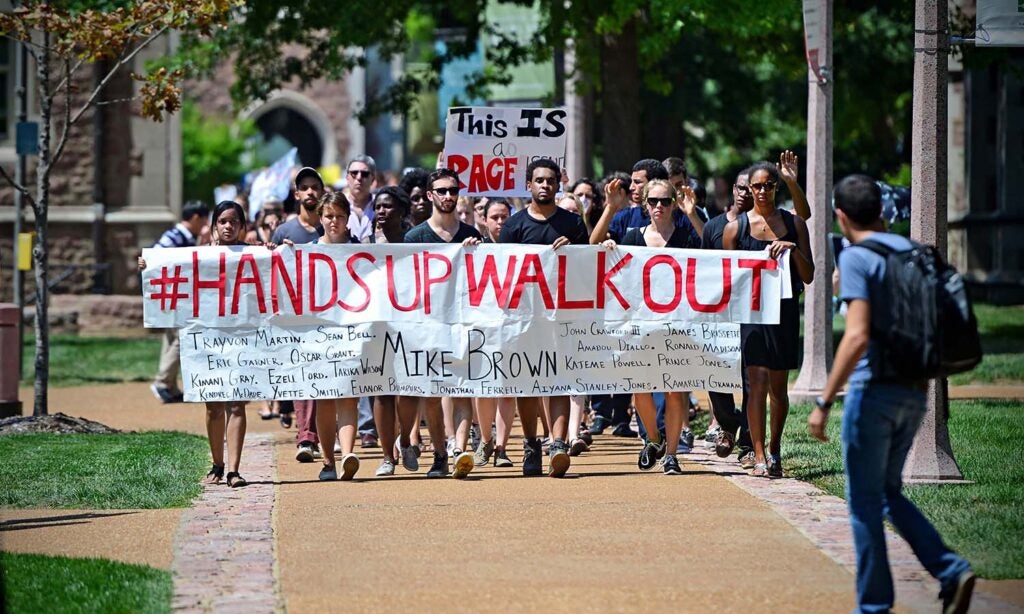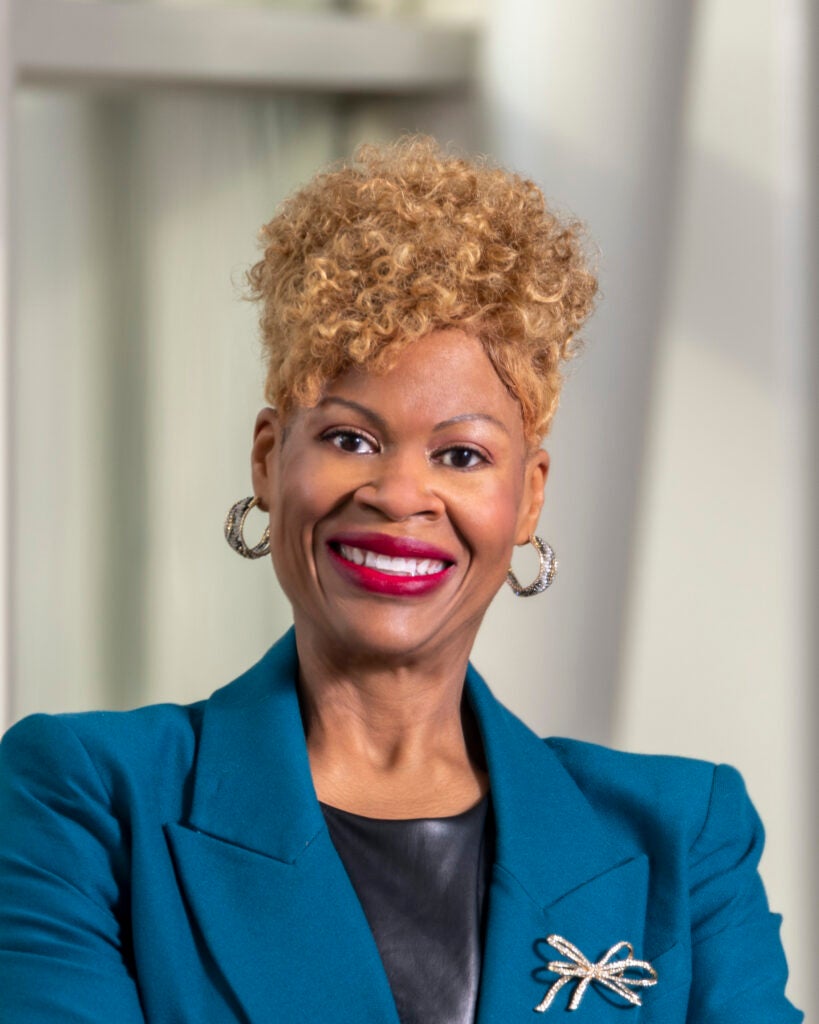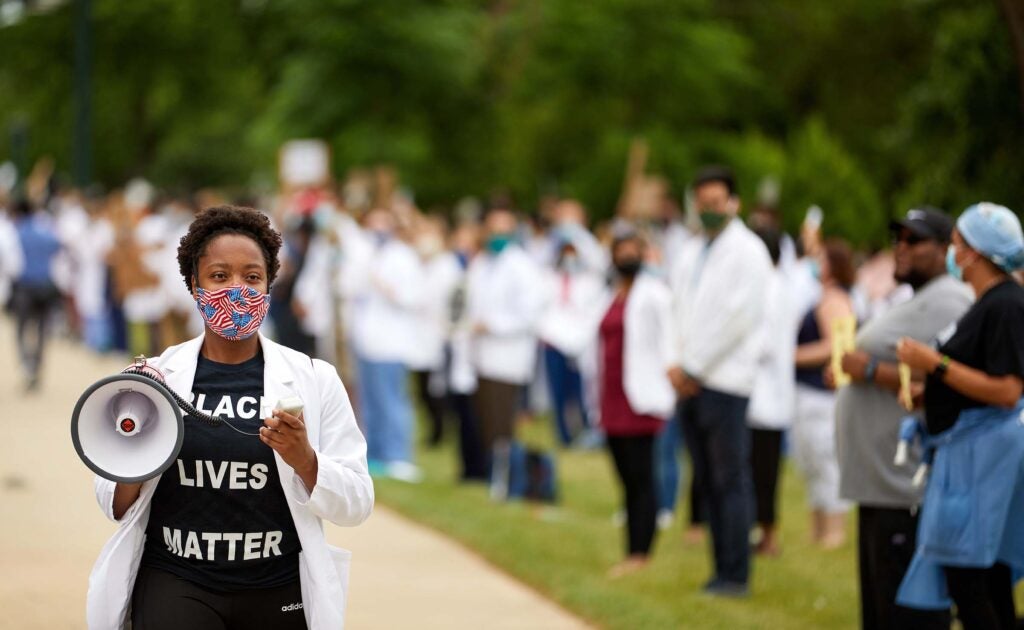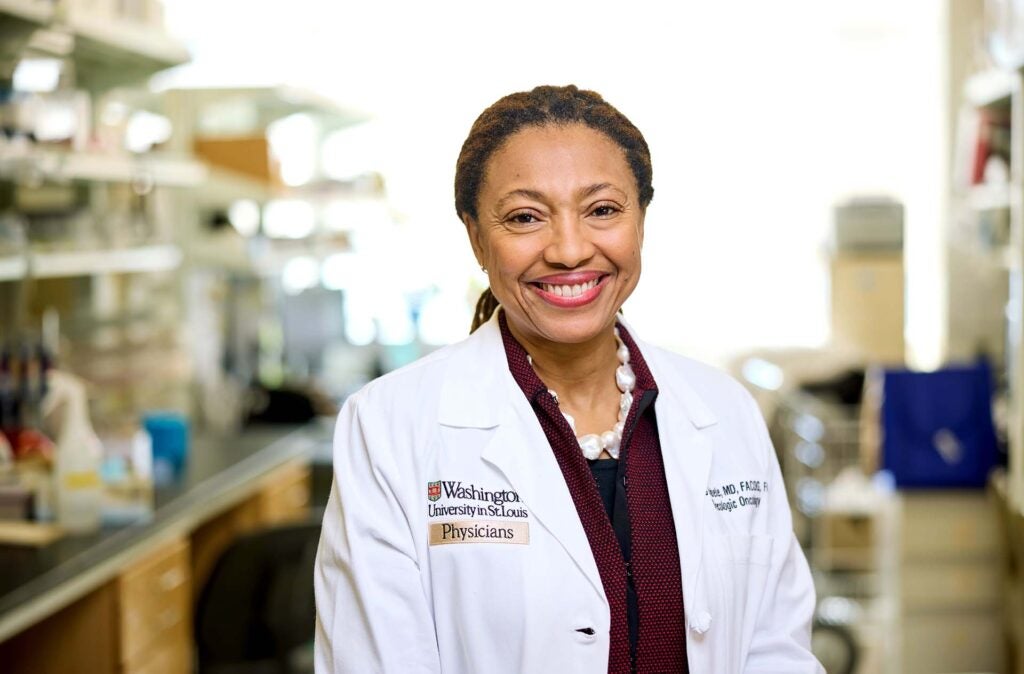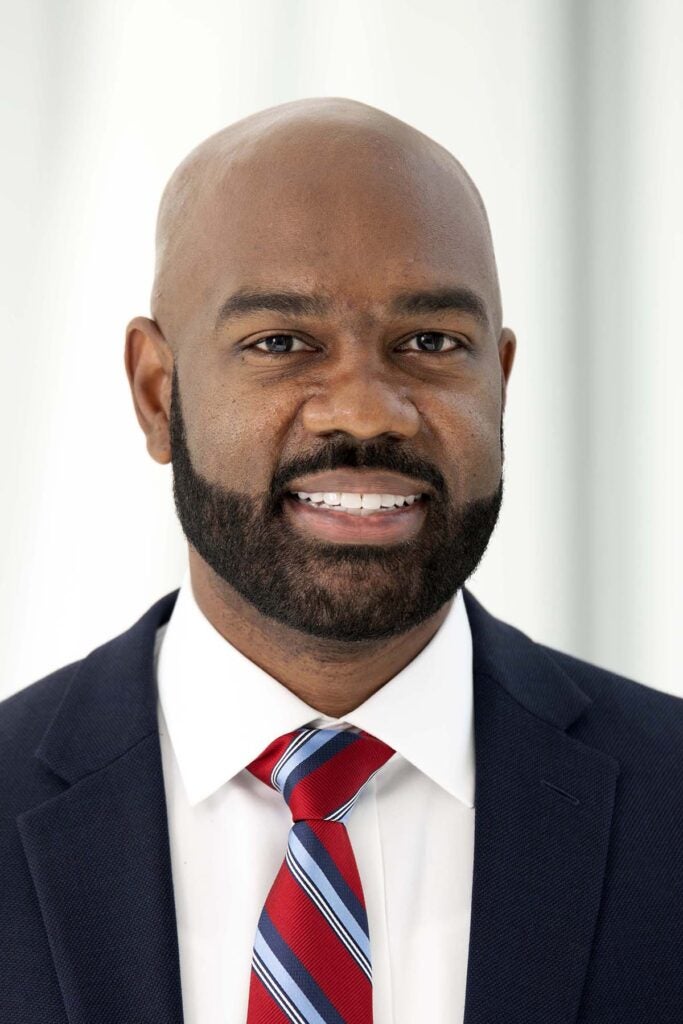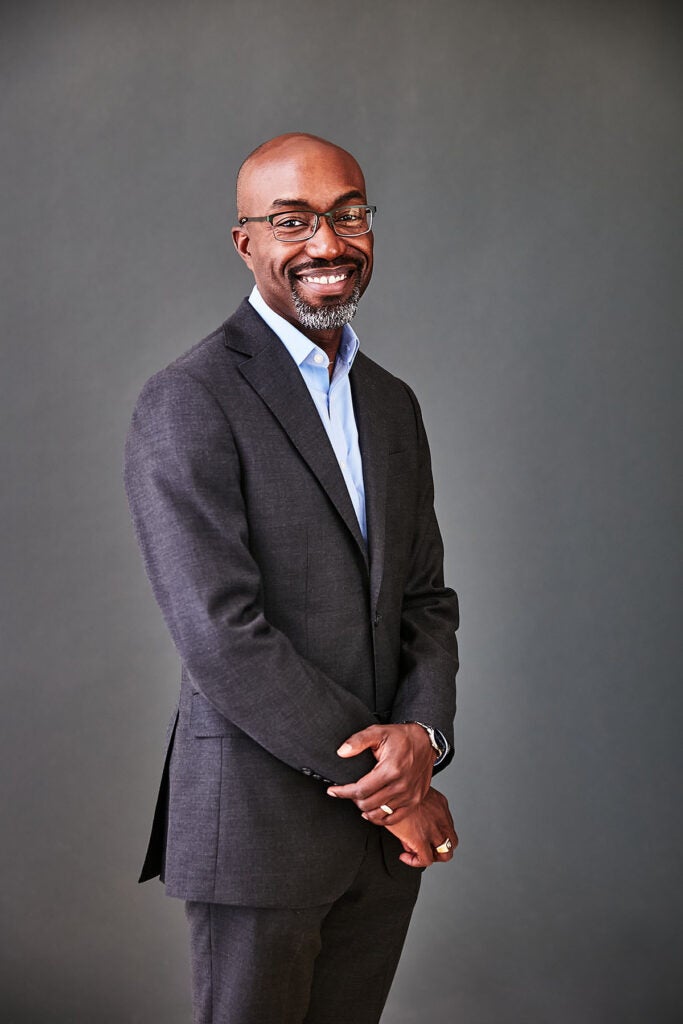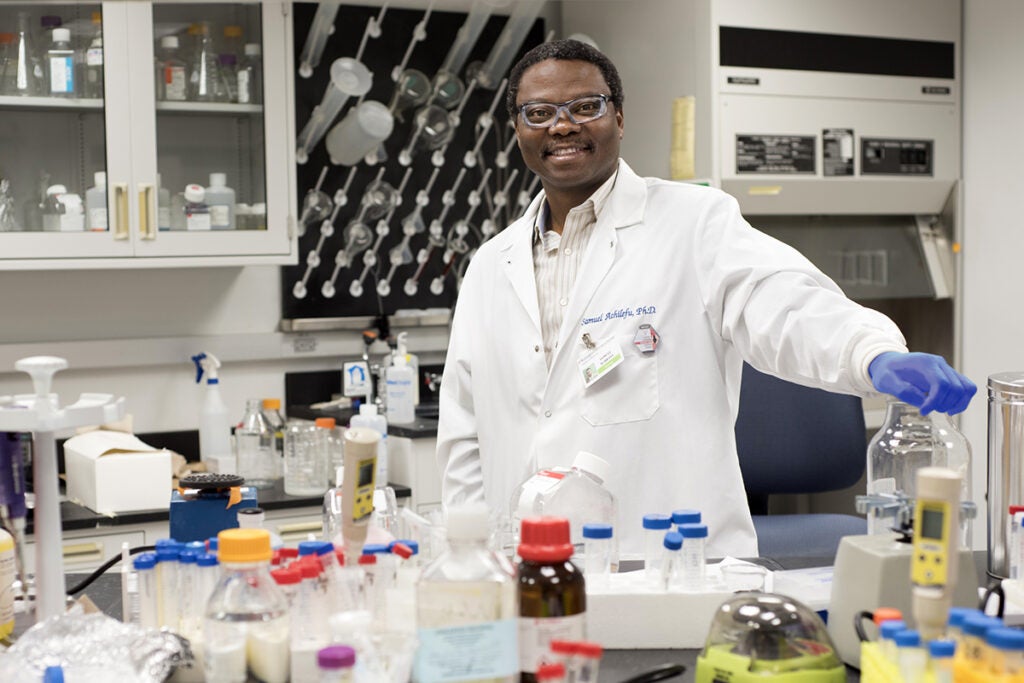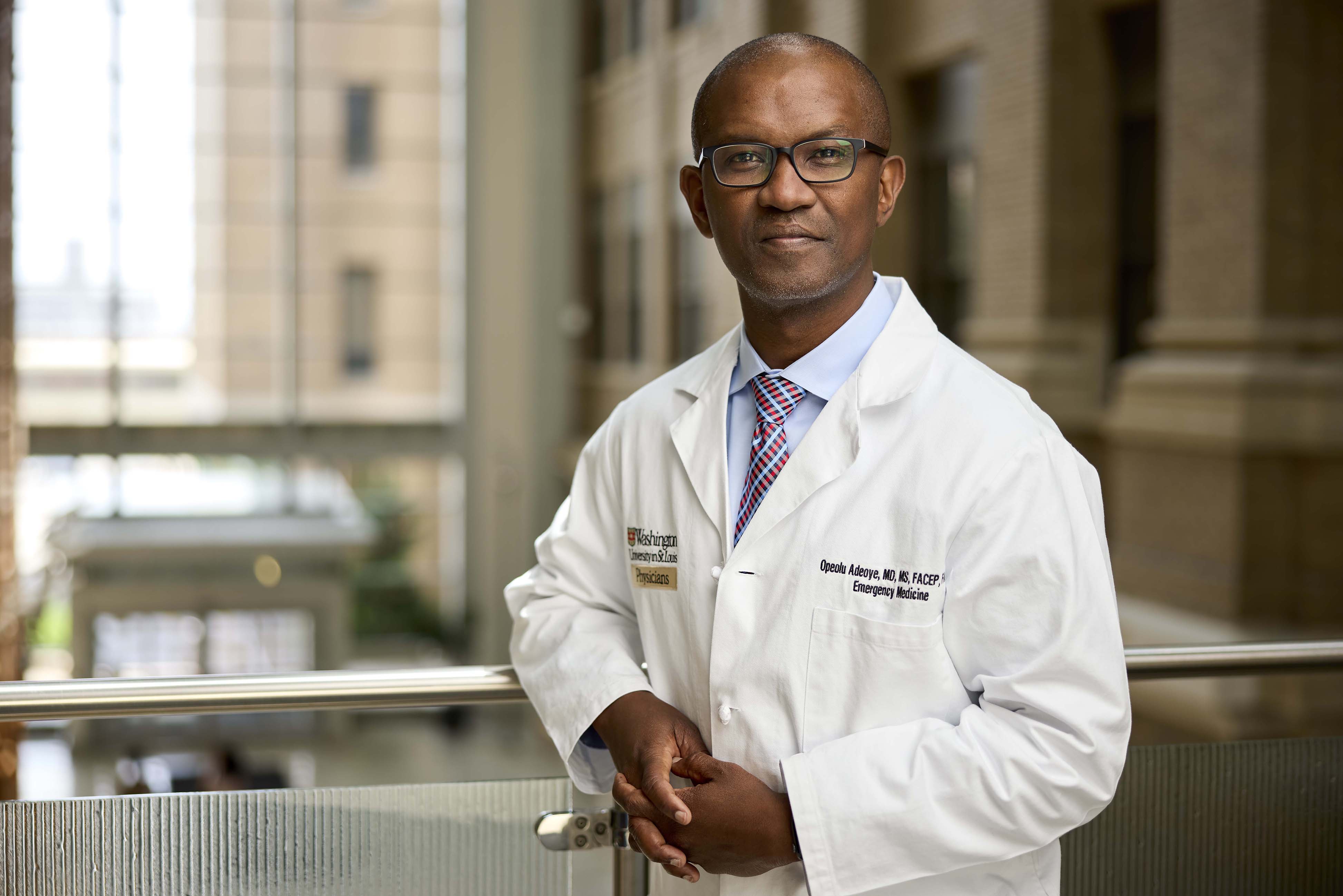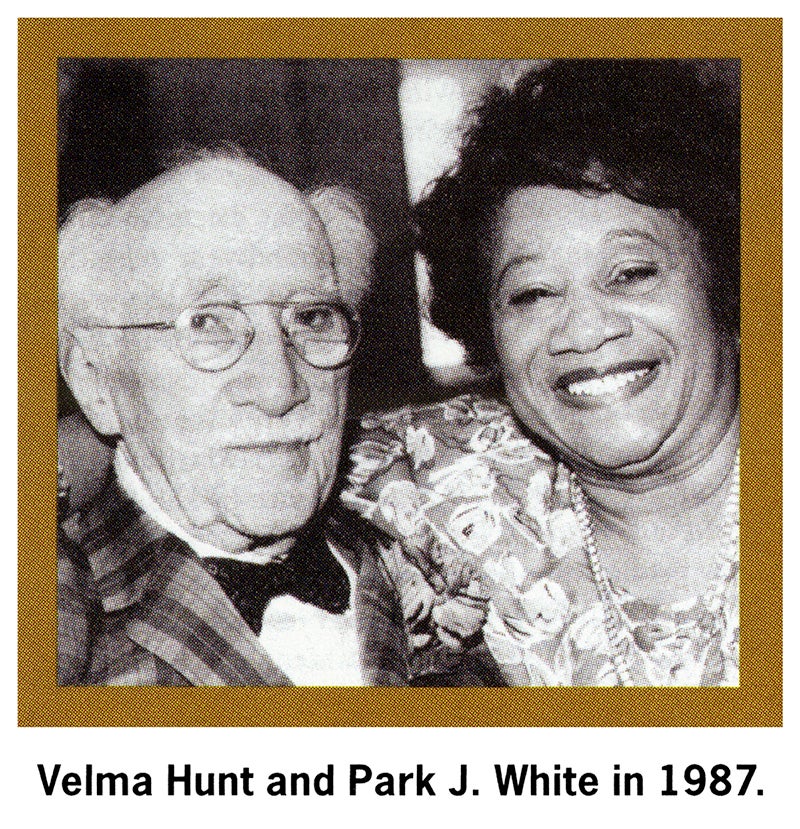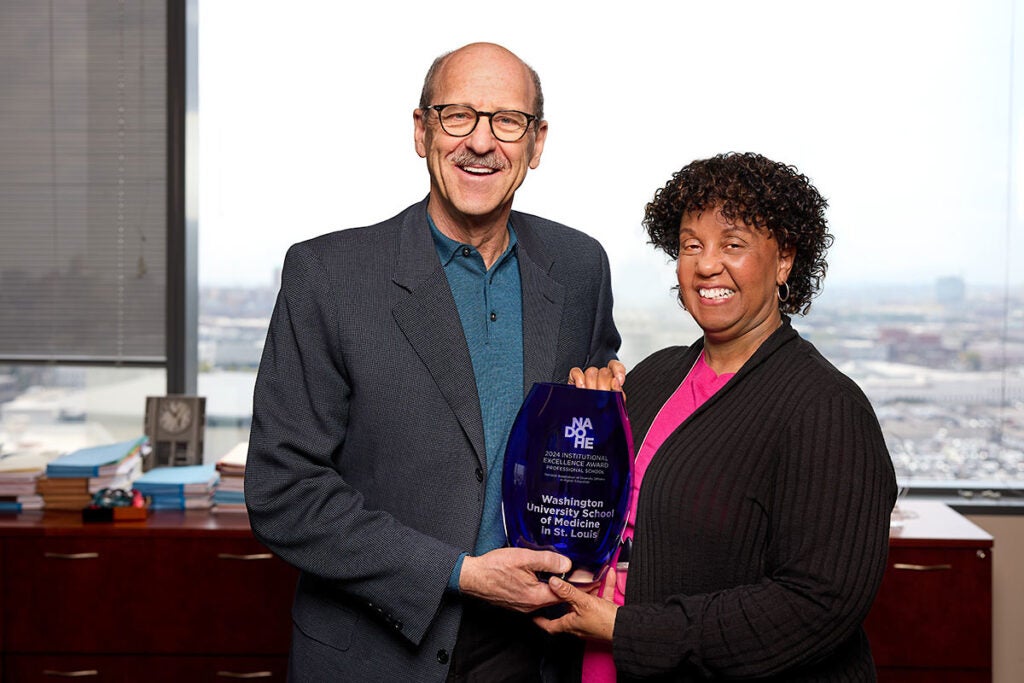Recognizing our past, shaping our future
Washington University School of Medicine, Barnes-Jewish Hospital and St. Louis Children’s Hospital were born as places of healing. But even as our institutions rose to national prominence, they also perpetuated racial injustice — harboring exclusion, segregation and mistrust.
Black people were deliberately excluded from being administrators or faculty. Black students were unwelcome. Black patients were treated in segregated wards or buildings, if they were treated at all.
Yet throughout our history, leaders in our community have arisen to demand justice loudly, to foster it quietly or simply to live as exemplars of a better way. We fully commit to following the path these wise leaders have forged.
Below, explore their stories and experiences on the Washington University Medical Campus, spanning more than a century.
Missouri joins the Union as a slave state and Maine as a free state through federal legislation known as the Missouri Compromise.
The first city hospital, St. Louis City Hospital, opens as a segregated institution, treating Black patients only in inferior parts of the hospital. It becomes known as City Hospital #1.
A state ordinance abolishes slavery in Missouri.
After relocating from its original 1879 whites-only facility, St. Louis Children’s Hospital accepts Black children at a walk-in clinic but not as inpatients. Image: St. Louis Children’s Hospital, 1884
Washington University affiliates with St. Louis Medical College, establishing the Medical Department of Washington University. Eight years later, the Missouri Medical College joins the university. Both the university and the medical college are segregated. Image: Missouri Medical College and Washington University Hospital, Jefferson and Lucas Avenue Buildings
Provident Hospital, later People’s Hospital, is founded as a 75-bed private Black hospital in St. Louis.
The U.S. Supreme Court decides the landmark Plessy v. Ferguson case. It rules that segregation laws do not violate the U.S. Constitution as long as the facilities for each race are equal in quality. It becomes known as the “separate but equal” decision, spawning the “Jim Crow” laws that bar…
Read More
The Jewish Hospital of St. Louis opens on Delmar Boulevard and soon admits Black patients to its outpatient clinic, though not to the hospital. It moves to Kingshighway Boulevard in 1926. Image: Postcard, Jewish Hospital, circa 1913.
The Flexner Report on Medical Education scolds poorly run medical schools and leads to the closing of many. On Abraham Flexner’s recommendation, Meharry Medical College and Howard University College of Medicine are the only two historically Black medical schools that survive the initial wave of closings. “[T]he physical well-being of…
Read More
Barnes Hospital opens. Its outpatient clinic treats Black patients, but Black hospital patients are admitted to segregated care in two adjacent houses. One room in the Barnes Emergency Division is designated for Black surgical and obstetrical patients. Image: Washington University Medical Campus, 1915. Care for Black hospital patients is restricted…
Read More
St. Louis Children’s Hospital opens a new Central West End building as a segregated facility. Four years later, it begins sending Black pediatric patients to Barnes Hospital’s adult “Colored Ward” for treatment. Image: St. Louis Children’s Hospital, 1915
Black patients are transferred from overcrowded, segregated wards at City Hospital #1 to the newly opened Black public hospital, City Hospital #2, at Garrison and Lawton.
The City Hospital #2 for Black patients is so congested that patients are often put in beds in hallways. Some patients are shifted to People’s Hospital, the private Black hospital, and the city is charged a daily rate for their care.
St. Louis passes an $87 million bond issue, with $1 million earmarked for a hospital that would care for Black patients. A dispute soon rages over whether the hospital should be free-standing or an adjunct to the white City Hospital #1. Black advocates, including attorney Homer G. Phillips, press hard…
Read More
Children’s Hospital opens a 17-bed area for “colored children,” called the James G. and Margaret L. Butler Ward. Image: In the Butler Ward, St. Louis Children’s Hospital, circa 1923
The Butler Ward opens at St. Louis Children’s Hospital in 1923 to serve Black children. It is in use until 1947, shortly after Children’s Hospital integrates. Image: In the Butler Ward, St. Louis Children’s Hospital
A “colored ward” for surgical patients is opened in the basement of Barnes Hospital and is eventually named “0400.” It becomes notorious for its location and deplorable conditions. Another ward for Black internal medicine patients is later created by enclosing an old porch on the first floor.
Barnes Hospital employs Black housekeepers, including Ophelia Jackson, who begins 45 years of employment. Image: Ophelia Jackson
St. Mary’s Infirmary in St. Louis is dedicated as a Catholic hospital for Black patients. It gives admitting privileges to Black physicians and employs Black nurses. Image: St. Mary’s Infirmary, circa 1955
Homer G. Phillips Hospital for the Colored, a public hospital for Black patients, opens in the Ville neighborhood of St. Louis. It has more training slots for Black interns and residents than any other hospital nationwide. It is named for Homer G. Phillips, a Black attorney who fought for the…
Read More
Barnes Hospital trustees consider eliminating the treatment of Black patients altogether. School of Medicine Dean Philip Shaffer, PhD, opposes the idea, arguing that for 25 years “it has been one of the fine distinctions of this medical center that it offers medical care without racial or social discrimination.” Segregated care…
Read More
Washington University’s Robert Elman, MD, chief of surgery at Homer G. Phillips Hospital from 1937 to 1955, is one of many white Jewish physicians who treat patients there alongside Black physician colleagues. “Excellence in one’s own field, small as it may be, is the best and perhaps the only way…
Read More
Page from a Homer G. Phillips Hospital School of Nursing pamphlet, circa 1940
One evening, David Goldring, MD, is working in the Children’s Hospital Emergency Room when a Black infant is brought in needing an incubator. The Butler Ward is full, so Goldring sends the child to the white ward instead. Furious, the nursing supervisor calls pediatrics head Alexis Hartmann, MD, who backs…
Read More
From 1945-1966, Park J. White, MD, a white pediatrician at Children’s Hospital, serves concurrently as the pediatric director at Homer G. Phillips Hospital. Image: Park J. White, MD
Ridge Farm, a Children’s Hospital facility for convalescent children, accepts its first three Black children.
A polio epidemic sweeps through St. Louis, flooding Children’s Hospital with patients. Alexis Hartmann, MD, repurposes the Blacks-only Butler Ward to serve the polio patients and relocates the Butler Ward patients throughout the hospital. Later that year, the Children’s Hospital board of managers votes to permanently desegregate the hospital.
A snack bar opens in the basement of the McMillan Building. It was “especially for Black employees,” said neurologist William Landau, MD, in an oral history. “It was actually called the ‘Chocolate Shop,’ double entendre intended.” Image: Blueprint of McMillan Hospital dining areas, 1929
The report “Higher Education for American Democracy,” commissioned by President Harry S. Truman, recommends that “federal appropriations [should] be given only to those schools willing to comply” with desegregation. Washington University dissents, saying that the university “disagreed with any recommendation as to the immediate abandonment of segregation” and that dismantling…
Read More
The Department of Ophthalmology at Washington University discovers it has inadvertently admitted a Black physician, James W. Nofles, MD, to its three-week postgraduate course. The School of Medicine decides to declare that the medical school is desegregated. Image: James W. Nofles, MD
The U.S. Supreme Court decides Shelley v. Kraemer, which originated in St. Louis. The court rules that enforcing racially restrictive covenants is a violation of the Equal Protection Clause of the Fourteenth Amendment.
Velma Murphy Jones, a graduate of Homer G. Phillips School of Nursing, begins a decades-long career at Barnes Hospital, where she serves as the first Black nurse in charge of a nursing division. Image: Velma Murphy Jones, right, in the Barnes Hospital Bulletin, February 1976
Helen E. Nash, MD, becomes the first Black woman to join the School of Medicine faculty and the first Black attending physician at Children’s Hospital, where she serves for more than 40 years. A trainee of Homer G. Phillips Hospital, she becomes a hugely impactful physician and mentor and establishes…
Read More
Ernest St. John Simms, a Black researcher, joins the medical school’s research staff, later contributing to the Nobel-Prize-winning research of Arthur Kornberg. Simms is named a research assistant professor in 1968, becoming the first Black person to hold a full-time academic appointment at the school, and is named an associate…
Read More
James Whittico, MD, is the first Black fellow in surgery. The first Black male physicians join the School of Medicine faculty: J. Owen Blache, MD, in pathology, George A. Gaikins, MD, in surgery and Edward B. Williams, MD, in internal medicine. Images: James Whittico, MD | J. Owen Blache, MD
Evelyn Whitlock, a Black student who had attended Washington University, begins work as a medical records librarian at Jewish Hospital. Eventually, she becomes director of the medical records department, where she supervises 18 people, takes charge of all patient records, and installs computer systems to better process reports. “The day…
Read More
Edgar R. Thomas becomes the first Black medical student at the School of Medicine but transfers after his first year, going on to earn a bachelor’s degree in biology and a master’s degree in zoology from Washington University. Image: Edgar R. Thomas
The U.S. Children’s Bureau awards Alexis Hartmann, MD, of Children’s Hospital funding to establish an expanded pediatric residency at Homer G. Phillips Hospital under Helen Nash, MD; Park White, MD; and Neil Middelkamp, MD. They also receive funds to build a modern unit for premature babies at Homer G. Phillips.
Wanda Hall is the first Black student to graduate from Washington University School of Nursing. She earns a master’s degree in 1953 and joins the faculty as an instructor in psychiatric nursing.
Bernard Becker, MD, a white physician, arrives at Barnes Hospital to head ophthalmology and is dismayed by the segregation he finds in McMillan Hospital. He threatens to leave unless integration occurs, and McMillan quickly desegregates. Later, he said: “I faced a good deal of opposition from my own visiting staff.…
Read More
Jewish Hospital accepts Black patients on a non-segregated basis, becoming among the earliest private hospitals in the region to do so.
In a landmark case, Brown v. Board of Education of Topeka, the U.S. Supreme Court rules unanimously that segregation of children in public schools is unconstitutional, thus overturning the “separate but equal” ruling in Plessy v. Ferguson. Chief Justice Earl Warren writes in his opinion: “Segregation of white and colored…
Read More
Renard Hospital, the psychiatric hospital, integrates after white psychiatrists Samuel Guze, MD, and George Winokur, MD, quietly begin admitting Black patients. Samuel B. Guze oral history audio recording available via Bernard Becker Medical Library Archives » Images: Samuel Guze, MD | George Winokur, MD
Black pediatrician Homer E. Nash Jr., MD, joins the Children’s Hospital medical staff, after earning his medical degree at Meharry Medical College and performing residency training at Homer G. Phillips Hospital. He dedicates his 46-year career to providing care to children in North St. Louis, many of them poor and…
Read More
A Black ophthalmologist, Howard Phillip Venable, MD, joins the School of Medicine faculty. Later, he is promoted to assistant clinical professor of ophthalmology. He is also a longtime physician at Homer G. Phillips Hospital and is director of ophthalmology there when the hospital closes in 1979. Howard Phillip Venable oral…
Read More
Carl A. Moyer, MD, head of Washington University Surgery, gives faculty status or Barnes Hospital admitting privileges to Black Homer G. Phillips surgeons Frank Richards, MD, William Sinkler, MD, and others. “Dr. Moyer was a terrific guy, very interested in Homer Phillips. The only way I got into the St.…
Read More
Jane Ervin becomes the first Black nurse at Children’s Hospital, working there for five years. Her husband, John B. Ervin, is the first Black dean on the Danforth Campus at Washington University.
Heart-lung pump patient and her parents leave St. Louis Children’s Hospital after being discharged, April 1959.
Charles Carroll, an Emergency Room orderly at Jewish Hospital, develops skills far beyond his job description. Generations of medical students and trainees learn from him. “As the years went by, my colleagues and I came to rely on Mr. Carroll. He could read X-rays way beyond our skills. It became…
Read More
Medical education is still segregated nationwide. Fewer than three percent of entering medical students are Black, and most of those are in two schools: Howard University College of Medicine and Meharry Medical College.
On one Christmas Eve, a group of medical students, fed up with segregation at Barnes Hospital, move beds around so that one ward “was like piano keys: Black, white, Black, white,” recalled Gerald Medoff, MD.
James L. Sweatt III, MD, is the first Black person to graduate from the School of Medicine. He becomes a thoracic surgeon. In the December 2015 issue of Washington Magazine, Sweatt reflects on the admissions process: “I had the impression for years that it was routine for all the professors…
Read More
President Lyndon Johnson signs the Civil Rights Act into law. In 1965, he signs the Voting Rights Act and the Medicare and Medicaid Act, providing health insurance for the elderly and those of limited income.
The Barnes Hospital Board of Trustees officially integrates the hospital. Its resolution explains: “RESOLVED, it is the policy of Barnes Hospital to operate without racial discrimination. This policy applies to persons served by Barnes, to its staff, and to membership on its governing board. Operating without discrimination means that: (1)…
Read More
Barnes Hospital head nurse Dorinda Harmon establishes a prenatal course, the first of its kind for expectant parents at the hospital. Image: Dorinda Harmon
The third, fourth and fifth Black medical students enter the School of Medicine. Patrick Obaiya transfers, Julian Mosley graduates in 1972 and Karen Scruggs graduates in 1973. “Statistics show that medical graduates tend to practice in the area in which they go to school and train. … I wanted to…
Read More
The Student Committee on Minority Student Admissions at the School of Medicine, including Julian Mosley and Karen Scruggs, makes recommendations to the Executive Faculty on ways to improve the recruiting and retention of underrepresented minorities.
Aubrey R. Morrison, MD, becomes the school’s first Black intern, and later the first Black chief resident in internal medicine. In 1987, he is named the school’s first Black full professor. The Washington University Medical Center Alumni Association honors him with its Faculty Achievement Award in 2016. In a 2021…
Read More
William L. Allen Jr., MD, is the first Black member of the Department of Radiology. Two years later, the American College of Radiology awards him its gold medal, its highest honor.
Starting this year, the School of Medicine exceeds the national average in its proportion of Black medical students. Image: Washington University medical students, circa 1970
Robert Lee, PhD, becomes the assistant dean for minority student affairs at the School of Medicine and remains in this job until 1992. Robert Lee oral history audio recording available via Bernard Becker Medical Library Archives » Image: Robert Lee, PhD, speaks with four recently accepted medical students, 1988.
Nurse LaFrances Cockrell is named the associate director of nursing at Barnes Hospital, overseeing obstetrics and gynecology, nurseries and the otolaryngology divisions, making her the first Black nurse at Barnes to hold administrative responsibilities. Image: LaFrances Cockrell, right, pictured in the Barnes Hospital Bulletin, December 1965
Barnes Hospital officials and the Parks, Recreation and Forestry Department of the City of St. Louis dedicate tennis courts in memory of Richard Hudlin, a nationally prominent Black tennis coach and longtime teacher at Sumner High School who successfully sued St. Louis’s Muny Tennis Association to end segregation of the…
Read More
Helen E. Nash, MD, serves as president of the medical staff at Children’s Hospital from 1977 to 1979. Image: Helen E. Nash, MD
In Outlook magazine’s Fall 1977 issue, Black surgeon Julian Mosley, MD, reflects on dealing with prejudice throughout his career: “I’ve learned that certain types of people aren’t worth arguing with. However, it does hurt when good friends who are intelligent make inadvertent remarks which demonstrate that deep down they have…
Read More
Robert Frank, Barnes Hospital director, temporarily establishes “geographic separation of patients” in the Maternity Hospital building, with ward patients (largely Black) on certain floors and private patients (mostly white) on others. The effect is resegregation. A brief protest occurs, and the policy is abandoned. Image: From the Barnes Hospital Bulletin,…
Read More
The City of St. Louis announces the closing of Homer G. Phillips Hospital, while the other public hospital — the largely white City Hospital #1 — remains open. This decision sparks protests in the Ville neighborhood, where Homer G. Phillips is located.
Henry L. Bramlette Animal Facilities: In 1948, Henry L. Bramlette, later known as “The Duke of McMillan,” came to work for the Department of Neurology and Neurological Surgery and became a well-respected animal handler and technician, helping hundreds of scientists complete complex projects. Upon his retirement in 1980, the animal…
Read More
William E. Walden is the first Black and Asian person to earn a doctorate in the Roy and Diana Vagelos Division of Biology & Biomedical Sciences at Washington University.
Calvin Weaver, who would become operations manager for all three housekeeping shifts at Barnes-Jewish Hospital, wins Jewish Hospital’s meritorious award for his service.
After 34 years as a surgical technologist at Barnes Hospital, Thelma Stocking retires. She had assisted Eugene Bricker, MD, with pelvic cancer surgeries and was a longtime scrub nurse for Richard Bradley, MD. “She was the stabilizing force in our OR. [Dr.] Willard Walker had both hands in a patient…
Read More
Helen E. Nash, MD, is revered for a decades-long career caring for generations of patients and advocating for the underserved. She retires as a Washington University emeritus professor in 1993 and serves as the school’s dean of minority affairs from 1994-1996. “She fought to get the best care for her…
Read More
The annual Dr. Helen E. Nash Academic Achievement Award is established at Washington University School of Medicine.
Nephrologist Will Ross, MD, MPH, becomes associate dean for diversity at the School of Medicine and establishes the Office of Diversity Programs. Later the Alumni Endowed Professor of Medicine, he institutes the Washington University Medical Plunge, a program for incoming medical students that includes a diversity retreat and visits to…
Read More
Brian Phillips becomes executive director of the Washington University Medical Center Redevelopment Corporation, which was founded in 1973 to expand the Medical Campus and to stabilize and revitalize its surrounding communities.
Michael R. DeBaun, MD, MPH, receives an $18.5 million grant — then the largest grant ever awarded to a pediatric faculty member at Washington University. With this funding, he heads an international, multicenter trial in sickle cell disease. In 2008, he becomes the Ferring Family Chair in Pediatric Cancer and…
Read More
The Barnes-Jewish Center for Diversity & Cultural Competence is founded with Brenda Battle appointed as its inaugural director, setting the stage for what would become the BJC Office of Diversity, Equity & Inclusion and Office of Community Health Improvement.
The Department of Neurology and Neurological Surgery institutes the annual Norman E. Seay Lecture, named for the Missouri civil rights leader.
Upon the death of Betty Robinson, for decades a beloved surgical technician in urology, Gerald Andriole, MD, urology division chief, praises her “true wisdom, a rare combination of experience, intelligence and humanity.” The Betty Robinson Urology Residency Education Fund is named for her today.
Washington University hires Daniel Blash, PhD, and Denise DeCou to provide diversity and inclusion education to staff across Washington University.
In early 2014, Kelvin Westbrook becomes the first Black chair of the BJC HealthCare board of directors. Image: Kelvin Westbrook
Arnold Bullock, MD, urologist, receives the Alan A. and Edith L. Wolff Distinguished Professorship within the Department of Surgery. Image: From left, Executive Vice Chancellor and Dean Larry J. Shapiro, Arnold Bullock, MD, and Chancellor Mark Wrighton, at Bullock’s endowed professorship installation ceremony, 2014
Children’s Hospital offers an internship to young Black women in honor of Helen E. Nash, MD.
In Ferguson, Missouri, protests and riots begin after the fatal police shooting of Black teenager Michael Brown. This period of unrest, known as the “Ferguson Uprising,” attracts national attention. At the School of Medicine, it spurs formation of the Senior Leadership Committee on Diversity and Inclusion. Credit: Washington University Photographic…
Read More
A landmark study, “For the Sake of All,” is published by researchers from Washington University and Saint Louis University, focusing on the health and well-being of Black people in the St. Louis region. It highlights significant and persistent health disparities. “Where you live in St. Louis has a powerful impact…
Read More
Sarah K. England, PhD, is the first Black woman to be an endowed professor at the School of Medicine. She is the inaugural Alan A. and Edith L. Wolff Professor of Medicine. Image: Sarah K. England, PhD
Angelleen Peters-Lewis, PhD, RN, FAAN, becomes the first Black leader to serve as Barnes-Jewish Hospital’s vice president and chief nursing executive — also a first within the BJC HealthCare system. Image: Angelleen Peters-Lewis, PhD, RN, FAAN
Sherree A. Wilson, PhD, becomes the inaugural associate vice chancellor and associate dean of diversity and head of the newly established Office of Diversity, Equity and Inclusion. Image: Sherree A. Wilson, PhD
In the wake of George Floyd’s death in police custody in Minneapolis, students organize a White Coats for Black Lives demonstration along Kingshighway Boulevard on campus, June 5, 2020. Thousands of faculty, students and staff raise their voices, insisting racism is a pandemic, too.
Dineo Khabele, MD, a leading gynecological oncologist, becomes the first Black person to head a School of Medicine department when she is named chair of the Department of Obstetrics & Gynecology. Image: Dineo Khabele, MD
At BJC HealthCare, Steven Player, PharmD, MBA, CDM, becomes the inaugural vice president for diversity, equity and inclusion. He develops the BESt Healthcare Institute, which prepares local students for careers in health care. Image: Steven Player, PharmD, MBA, CDM
Jason Purnell, PhD, MPH, becomes inaugural vice president of community health improvement at BJC HealthCare. Image: Jason Purnell, PhD, MPH
Samuel I. Achilefu, PhD, the Michel M. Ter-Pogossian Professor of Radiology, receives a major NIH grant for his work on developing imaging goggles for fluorescence-guided surgery. In the same year, he is elected to the prestigious National Academy of Medicine. Image: Samuel I. Achilefu, PhD
The School of Medicine releases a “Commitment to Anti-Racism” statement, articulating the school’s intent to address systemic disparities across its missions of education, research and patient care. “There are current structures, practices, and policies within our own healthcare, research, and education systems and institution that are directly in conflict with…
Read More
Opeolu M. Adeoye, MD, becomes the first Black person to lead a newly formed department at the School of Medicine when he is named head of the new Department of Emergency Medicine. He is also the inaugural BJC HealthCare Distinguished Professor of Emergency Medicine. Image: Opeolu M. Adeoye, MD
Velma Hunt, a longtime Children’s Hospital employee, retires after more than 60 years of service as a patient liaison in the emergency room. Image: Velma Hunt, right
A street on the Medical Campus is re-christened “Nash Way” in honor of distinguished Black sister-and-brother pediatricians, Helen E. Nash, MD, and Homer E. Nash Jr., MD. Image: A plaque on the south wall of the Eric P. Newman Education Center commemorates the naming of Nash Way.
Bernard Becker Medical Library unveils a temporary exhibit entitled “In Their Own Words: Stories of Desegregation at Washington University Medical Center.” Drawing on oral histories, photographs, architectural plans and other documents, the exhibit features stories from doctors, nurses, students and administrators who experienced segregation and advocated for change. The full…
Read More
The School of Medicine receives the 2024 NADOHE Institutional Excellence Award: Professional Degree Granting Institution for demonstrating measurable progress in promoting and sustaining innovative diversity efforts within the campus community. NADOHE is the National Association of Diversity Officers in Higher Education. Image: David Perlmutter, MD, executive vice chancellor for medical…
Read More
A continuing story
As we examine and reveal our past, we lay bare the ugliness, the struggle and the pain. We also honor the courage and determination of those who have guided Washington University School of Medicine, Barnes-Jewish Hospital and St. Louis Children’s Hospital toward justice.
We recognize that the harms of the past are still alive and that our journey is ongoing as we pursue equity in all our missions. We commit to achieving that equity, for the betterment of our community and the wider world that we serve.
We know what success requires: transparency, intentionality, compassion, vigilance, accountability and reconciliation. And we know that we will achieve that success, together.


